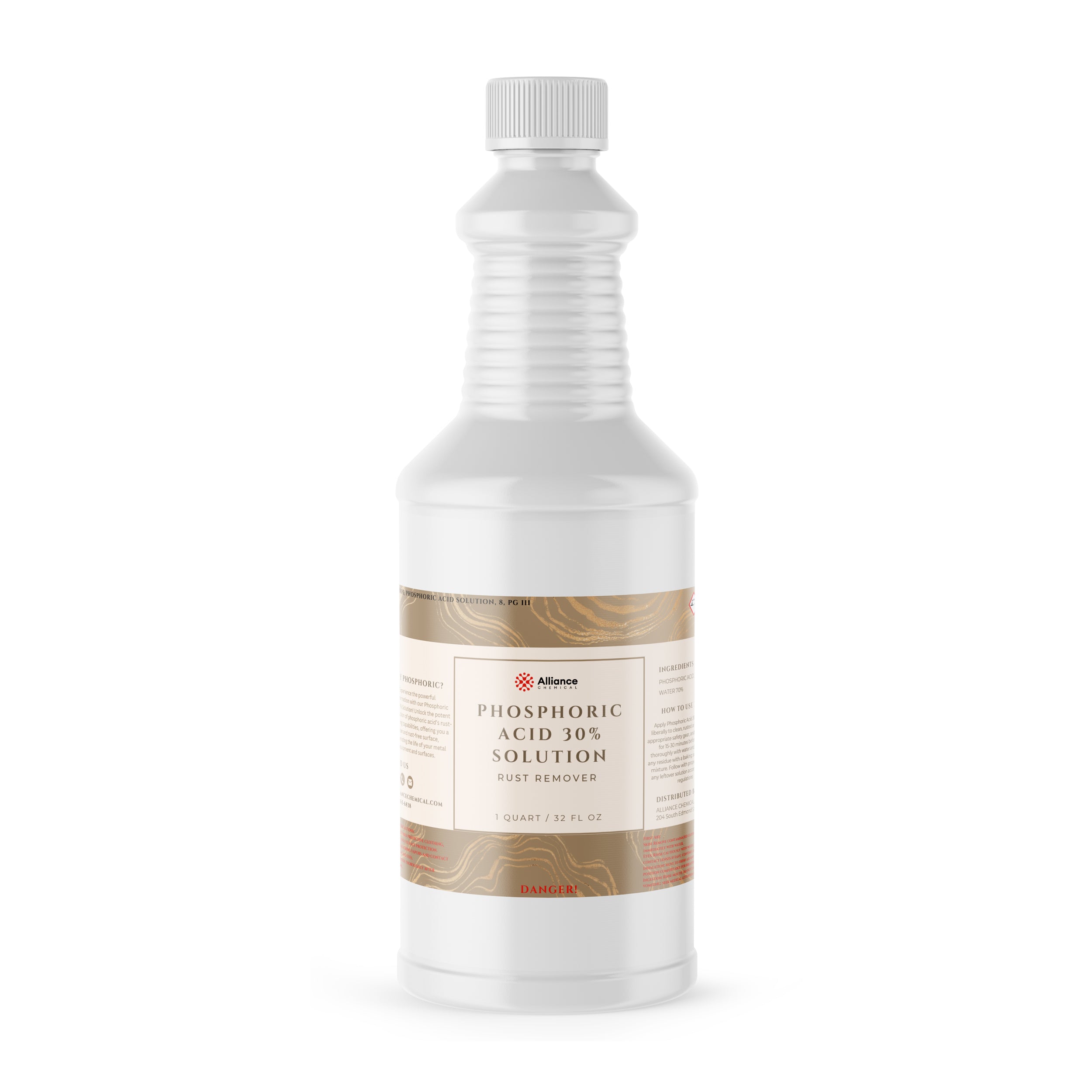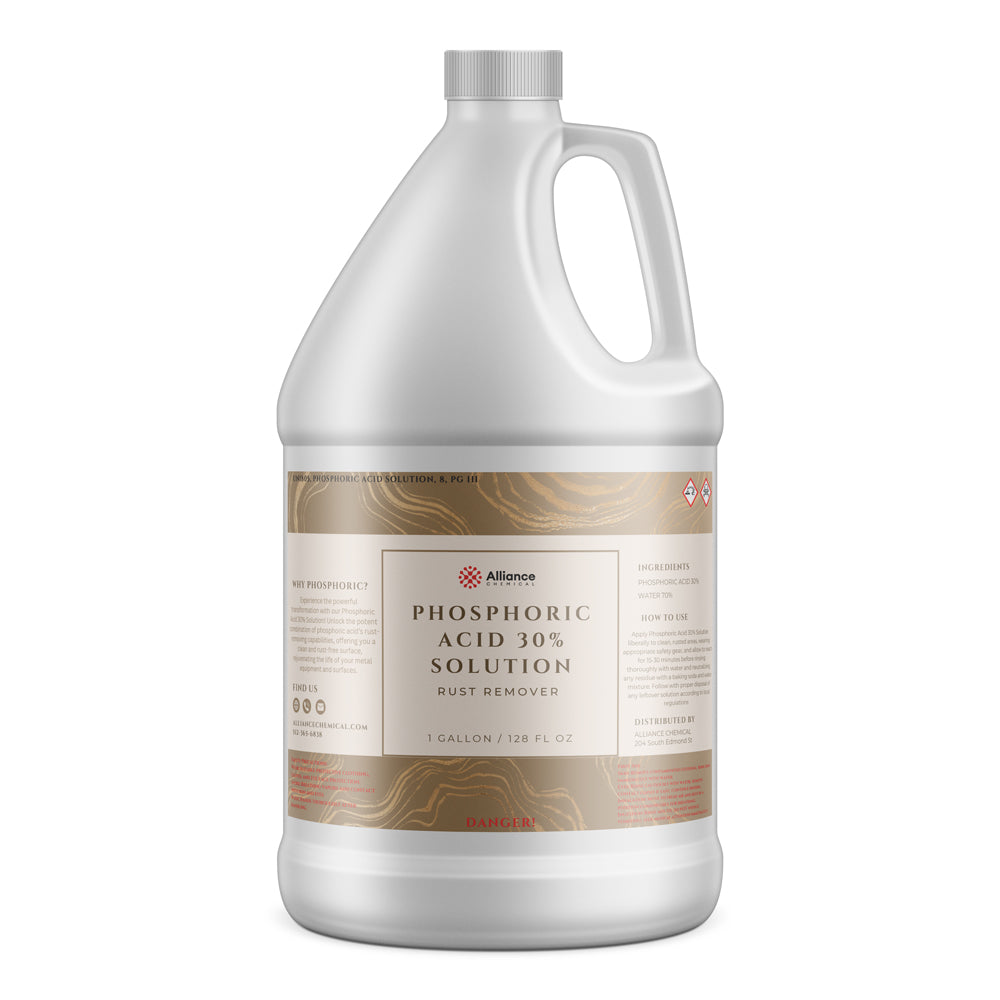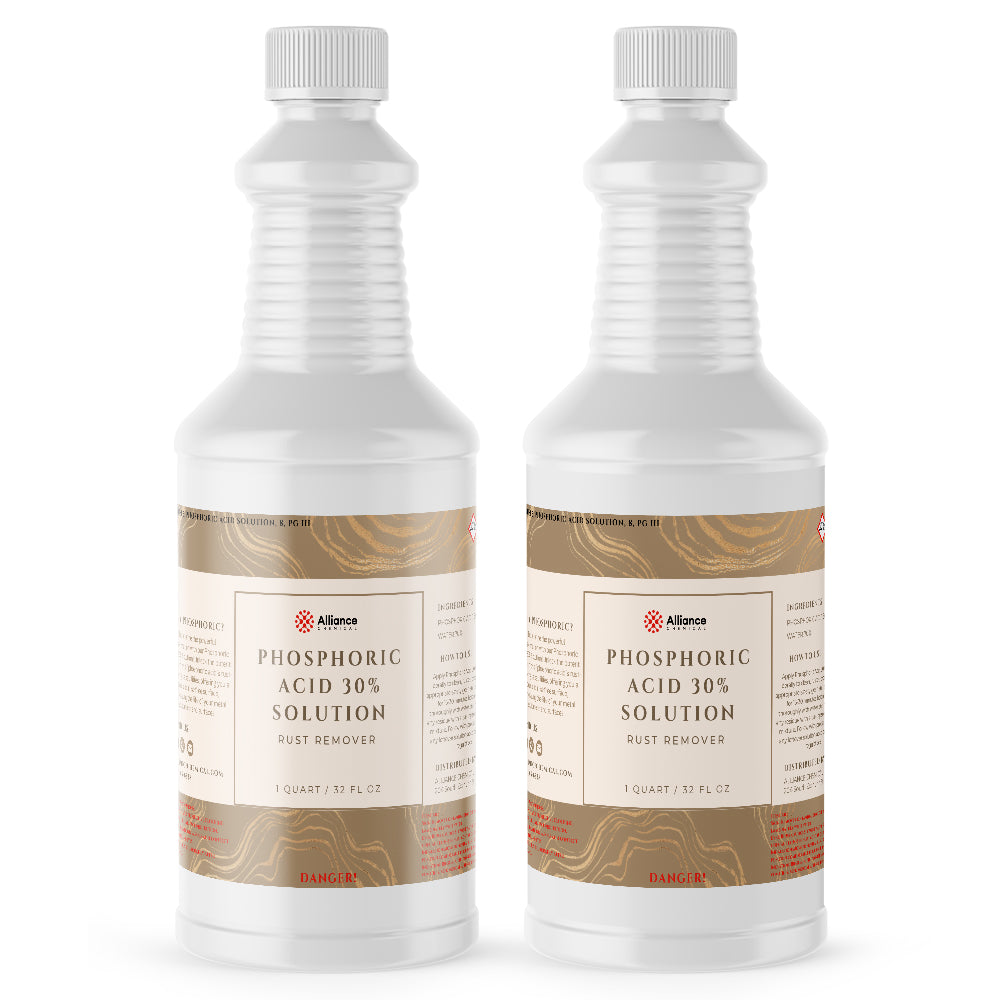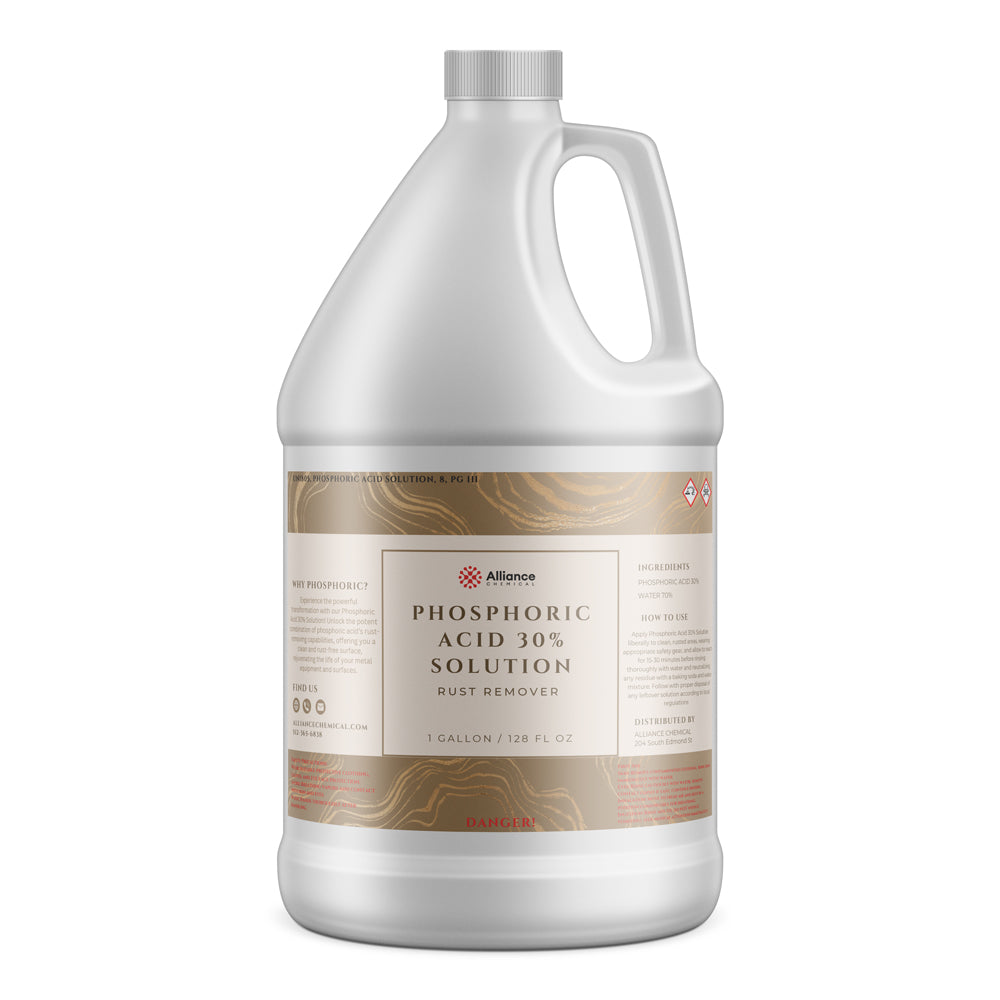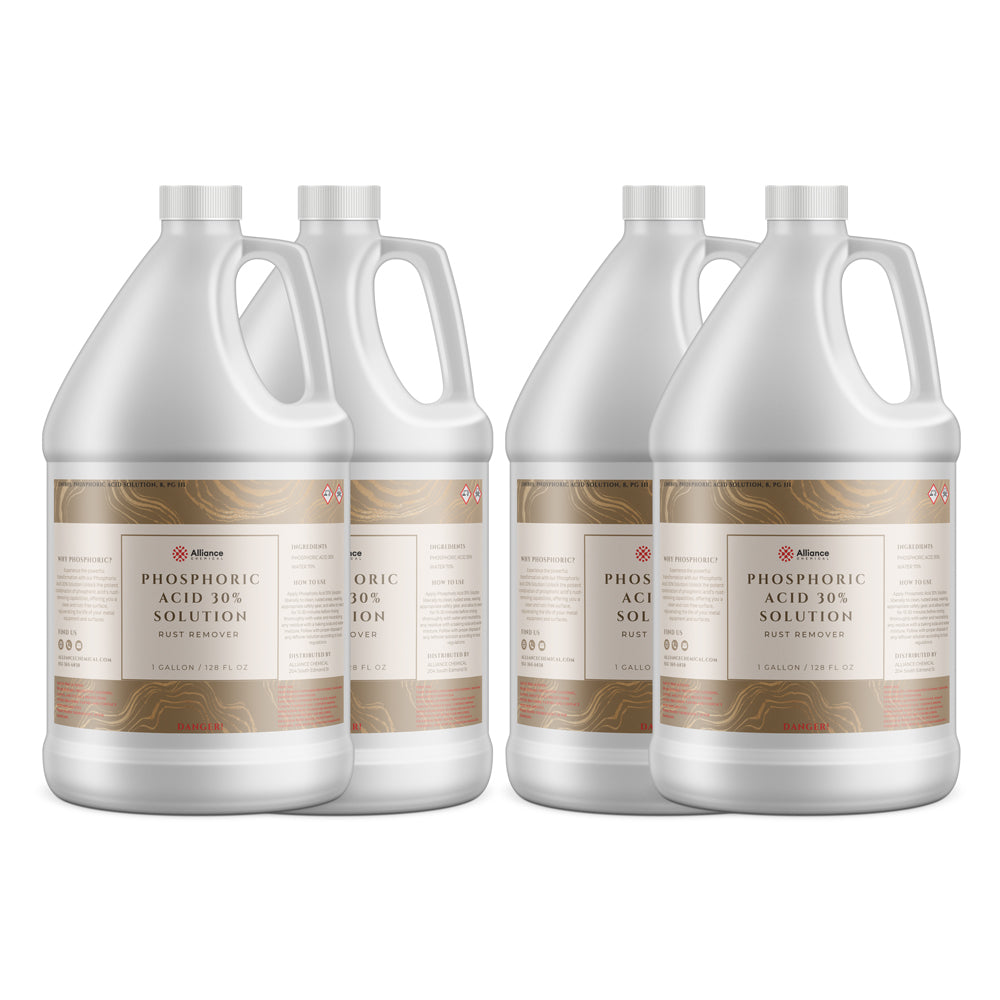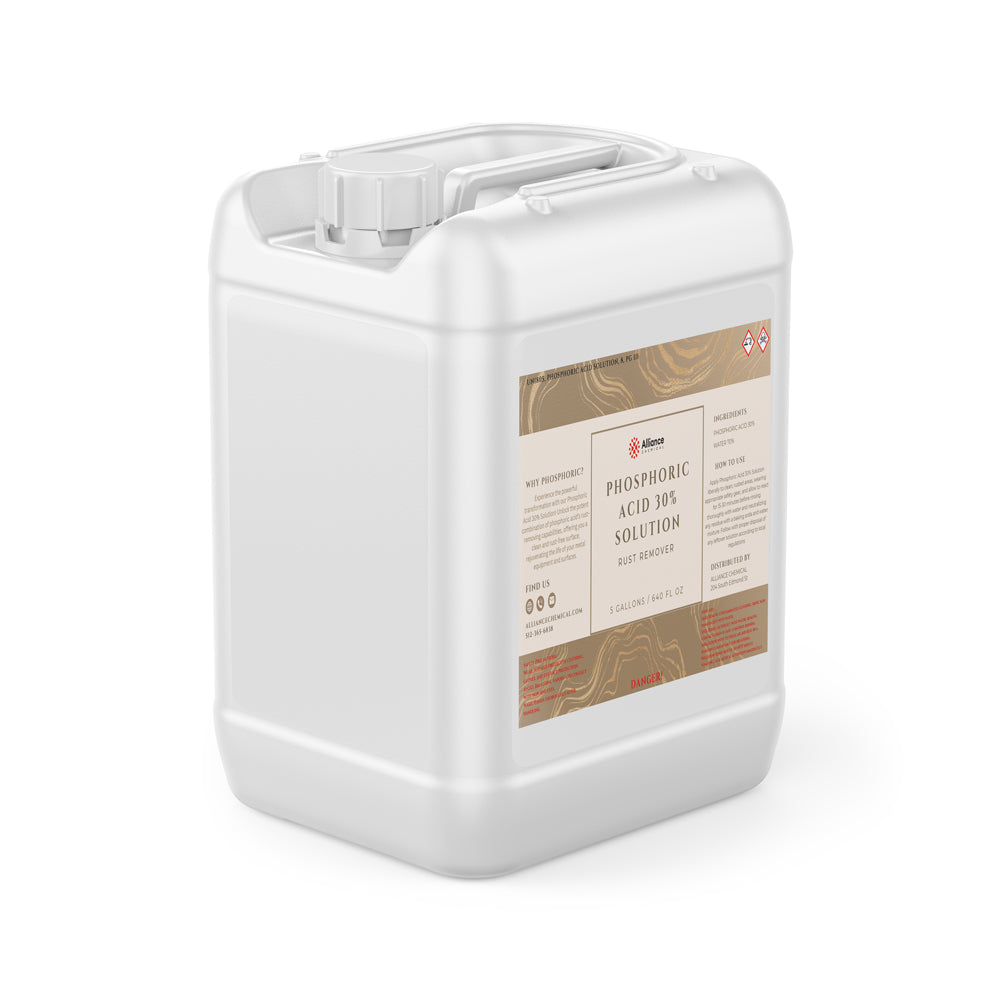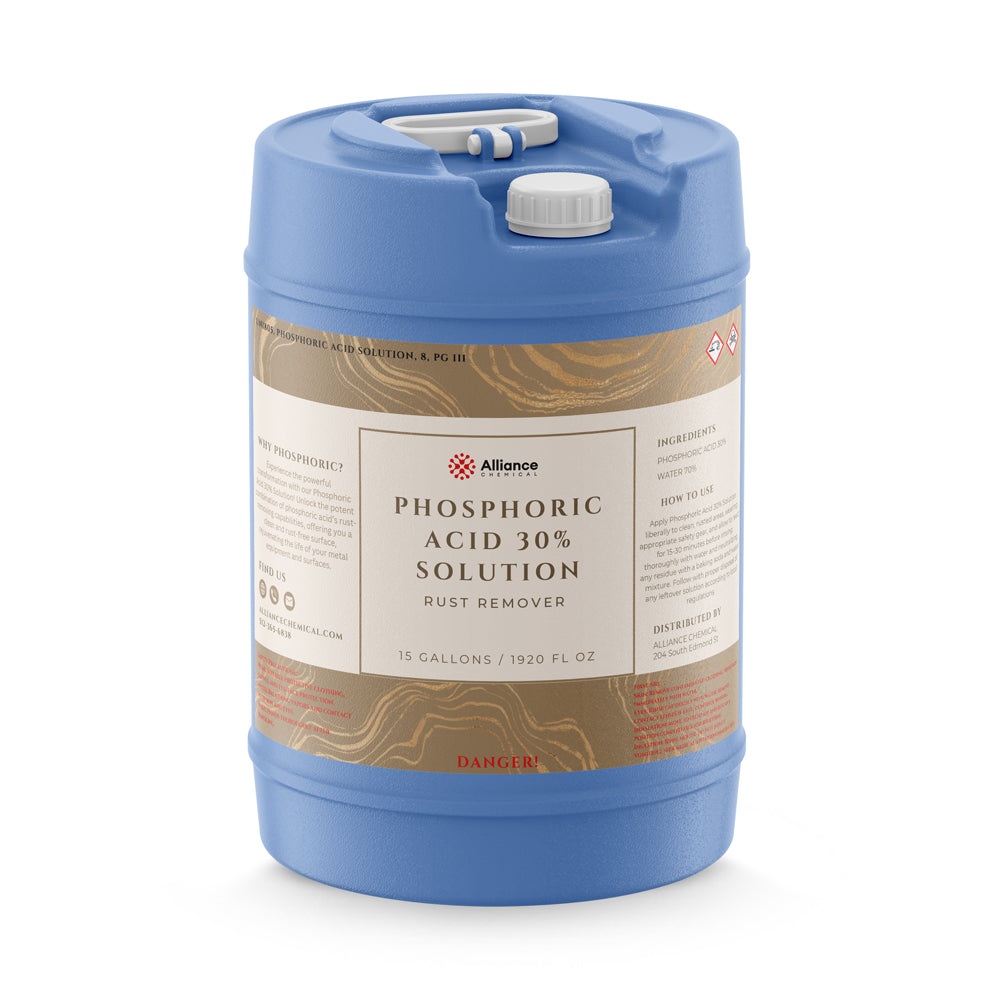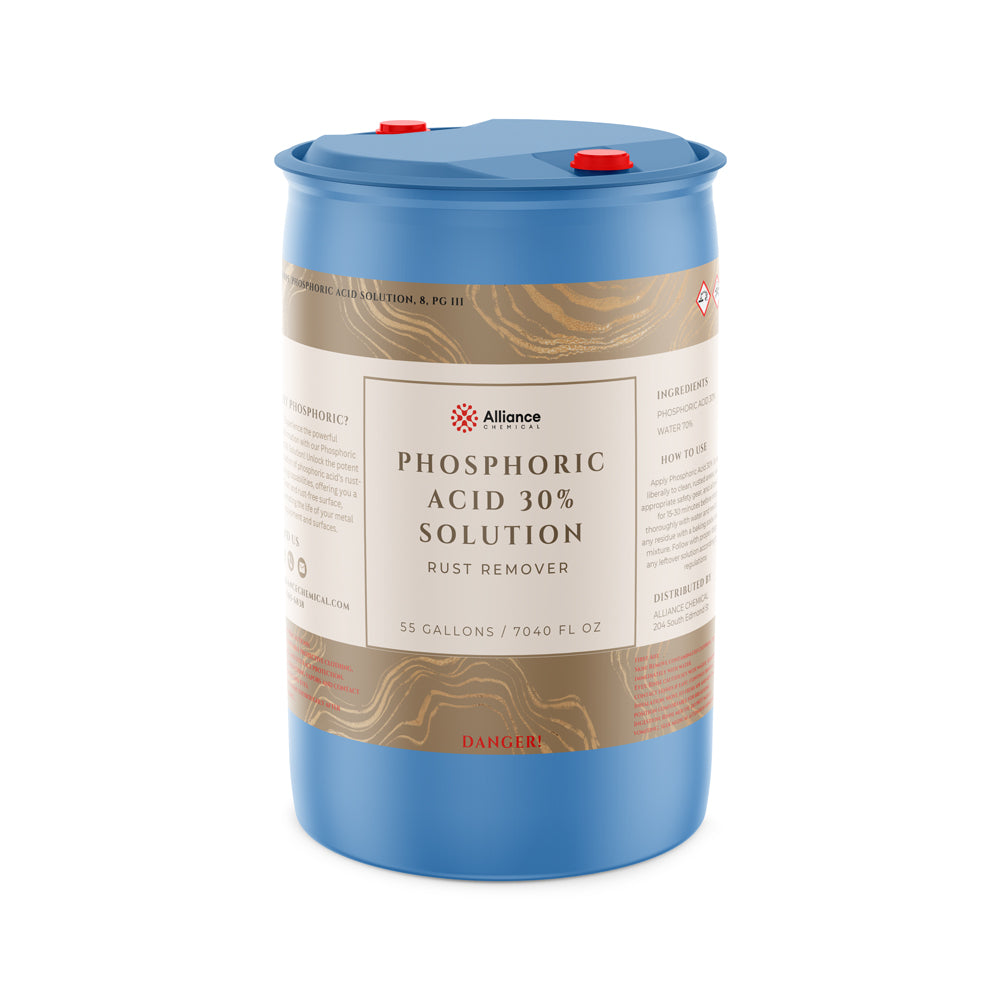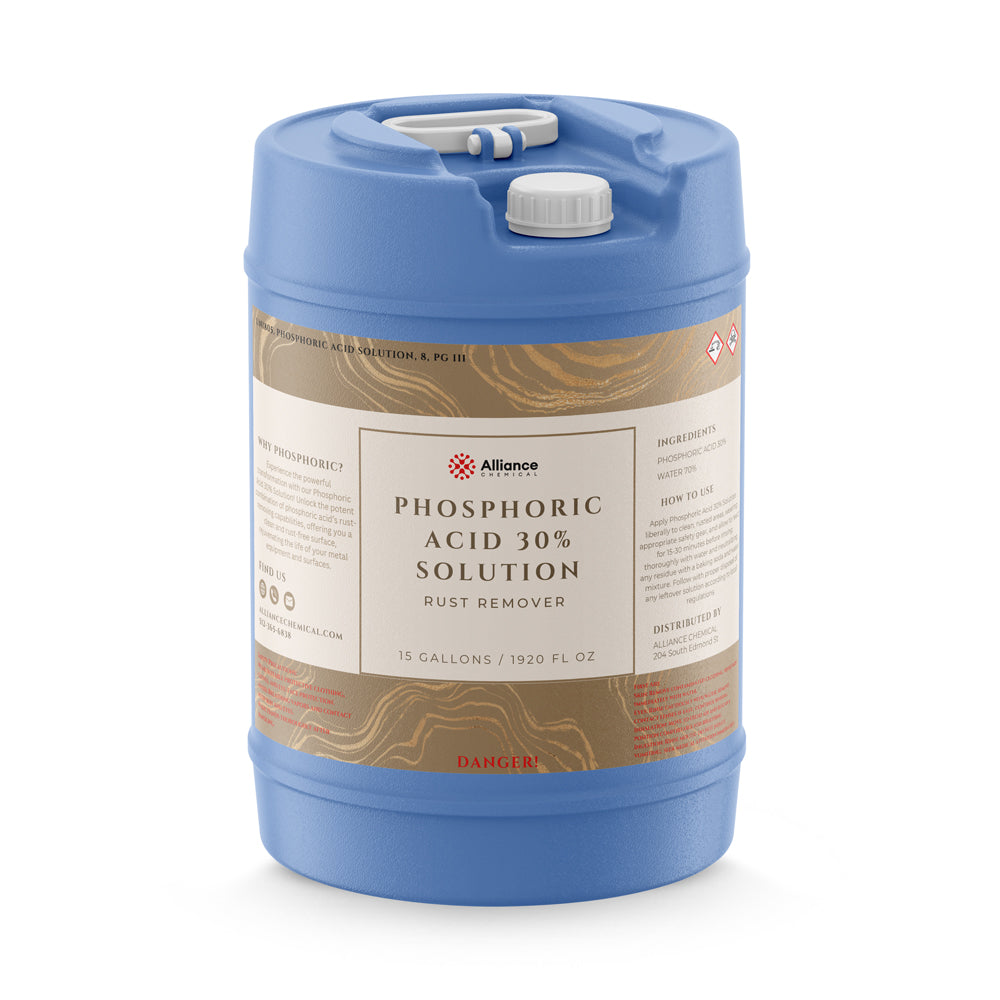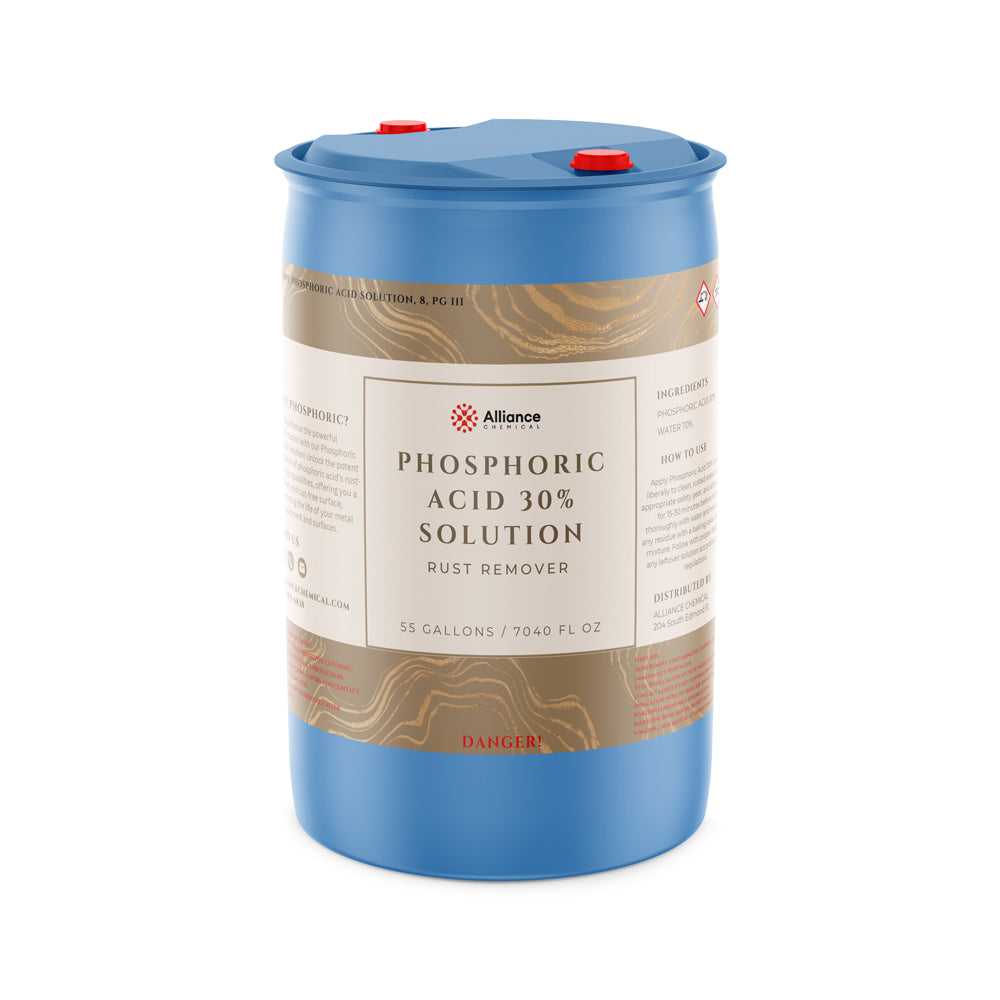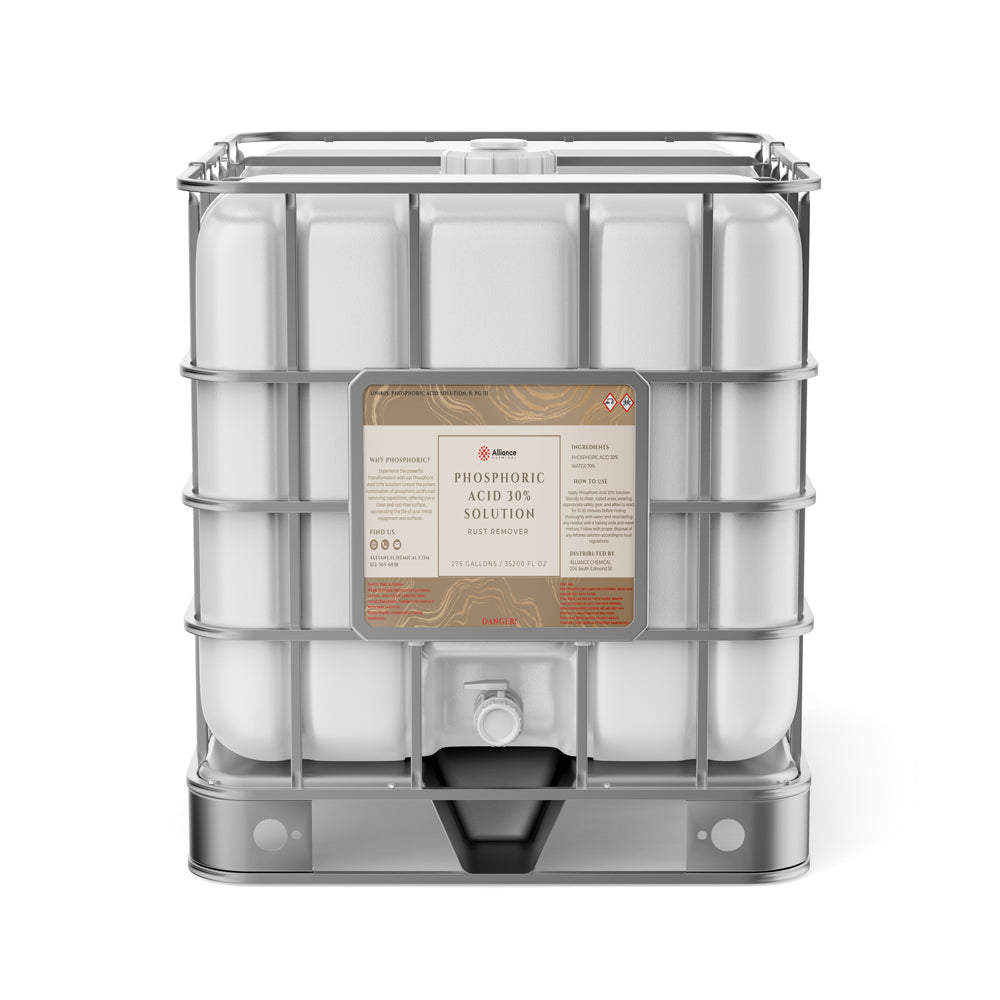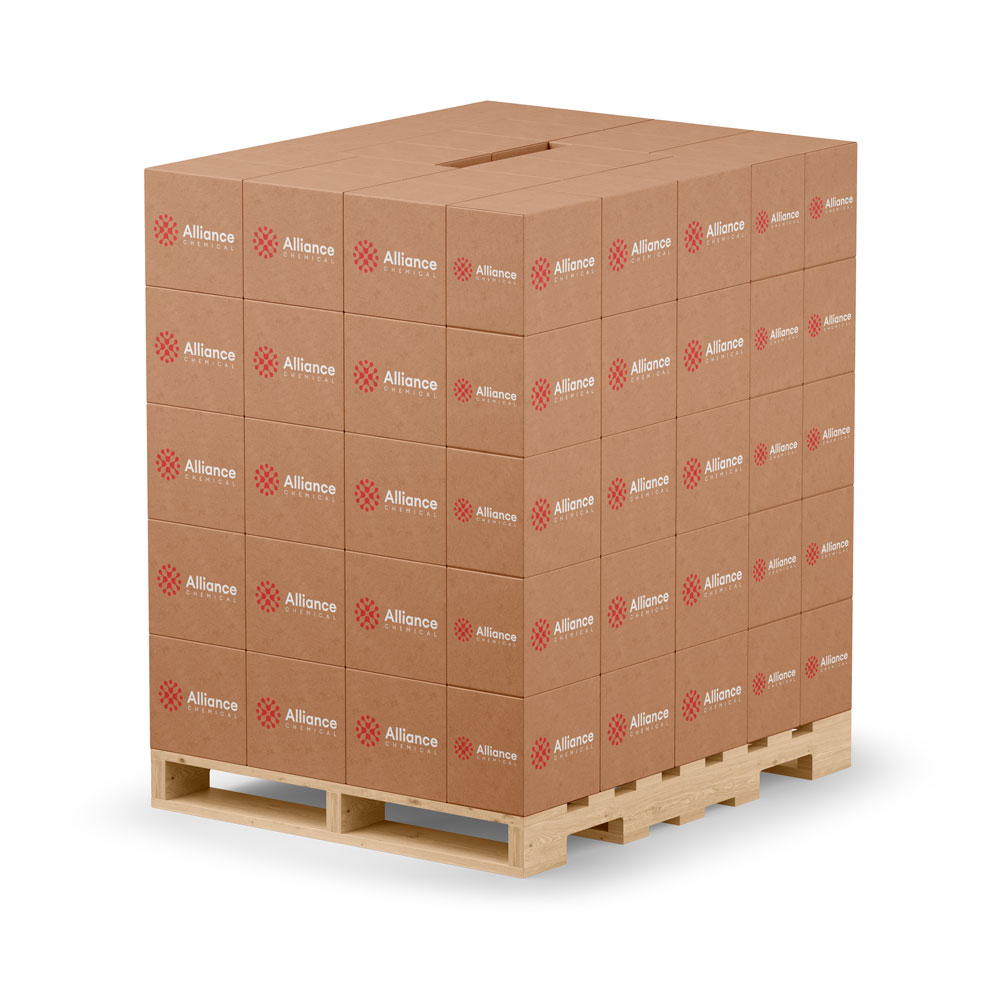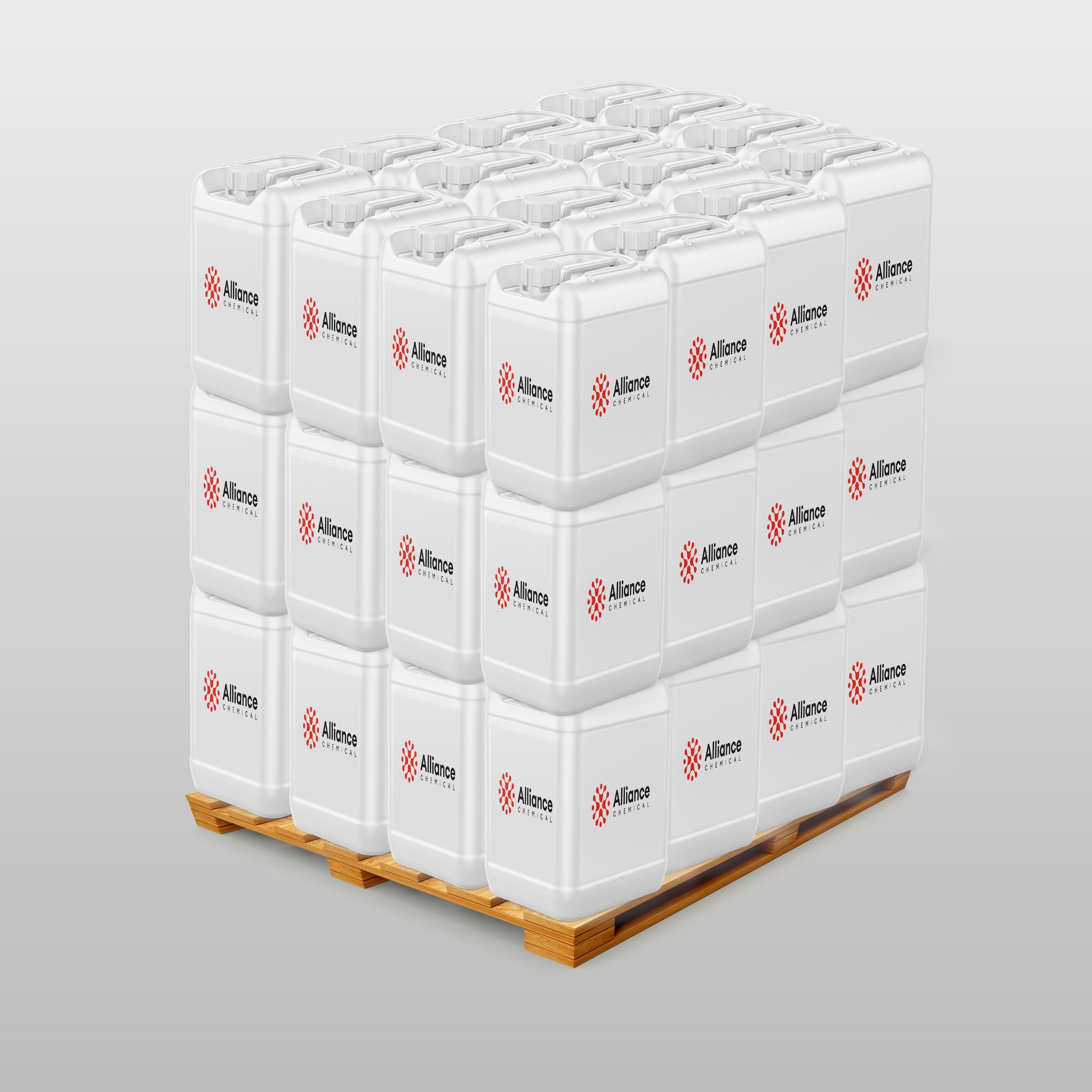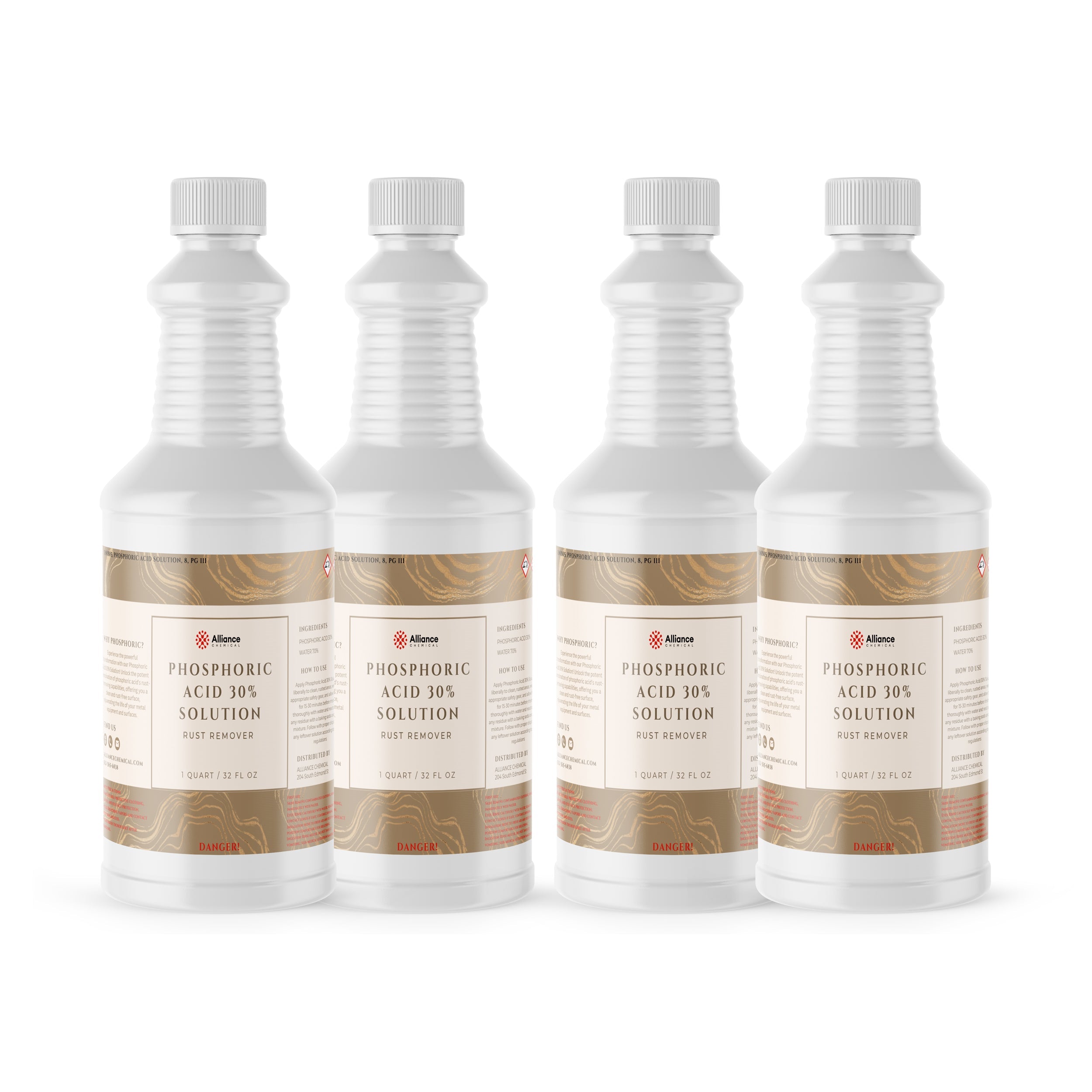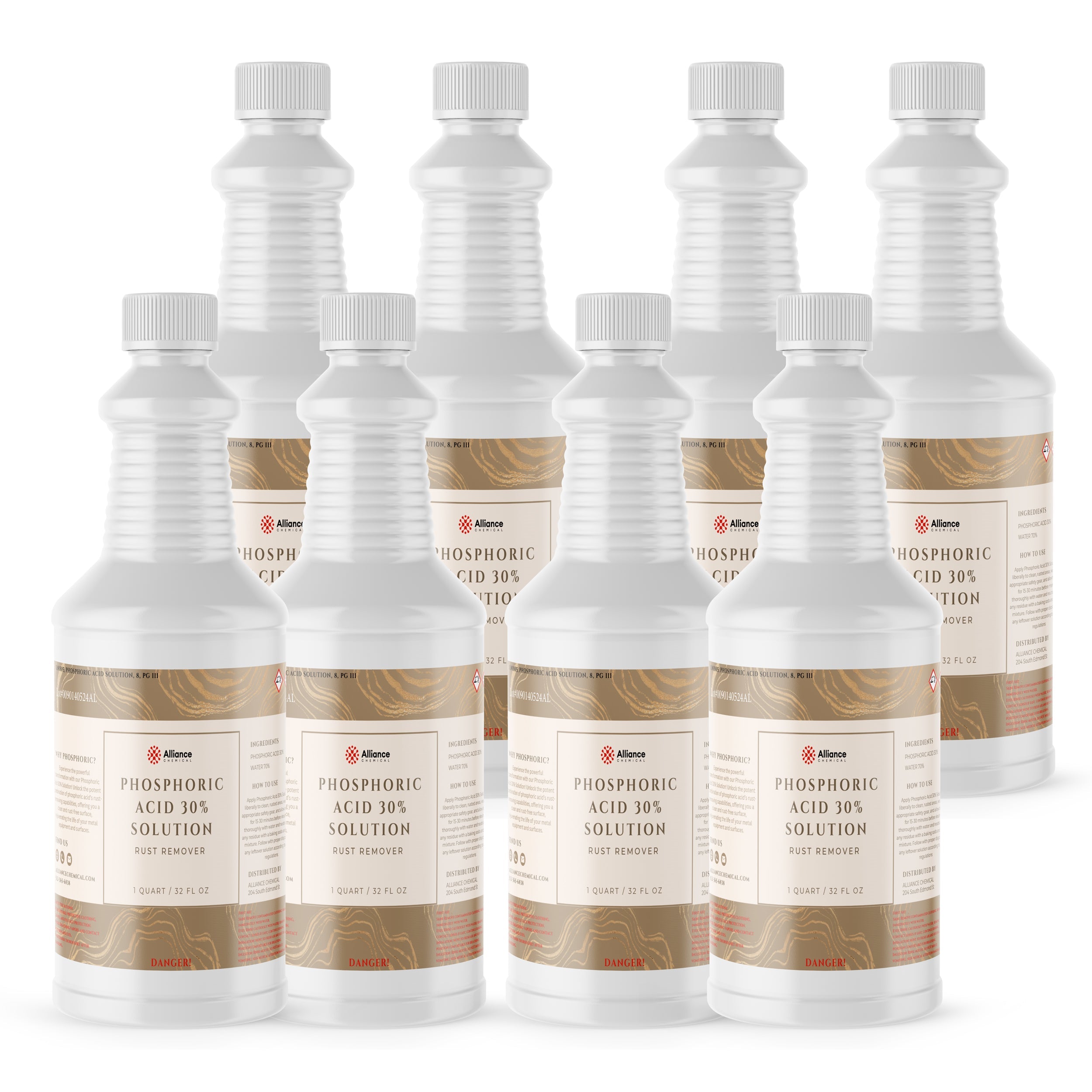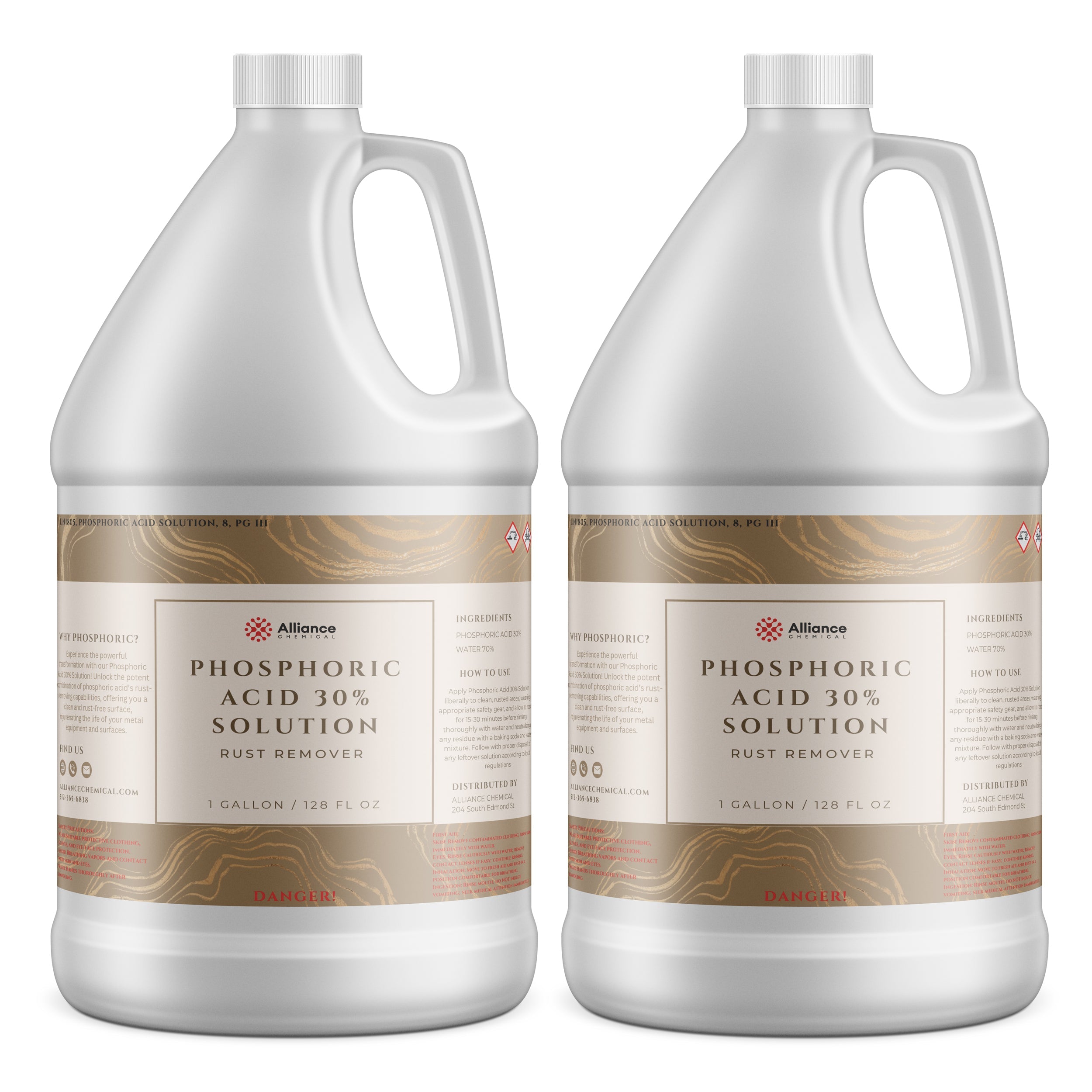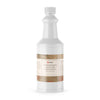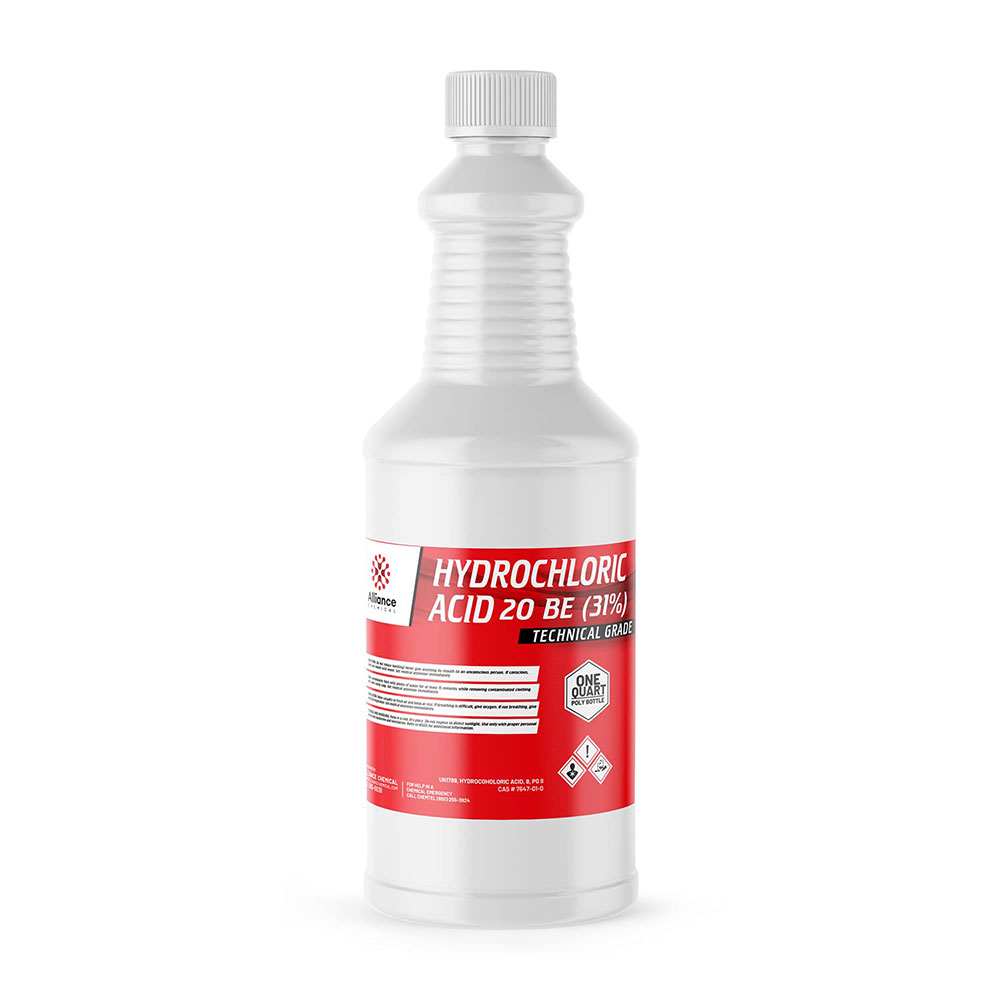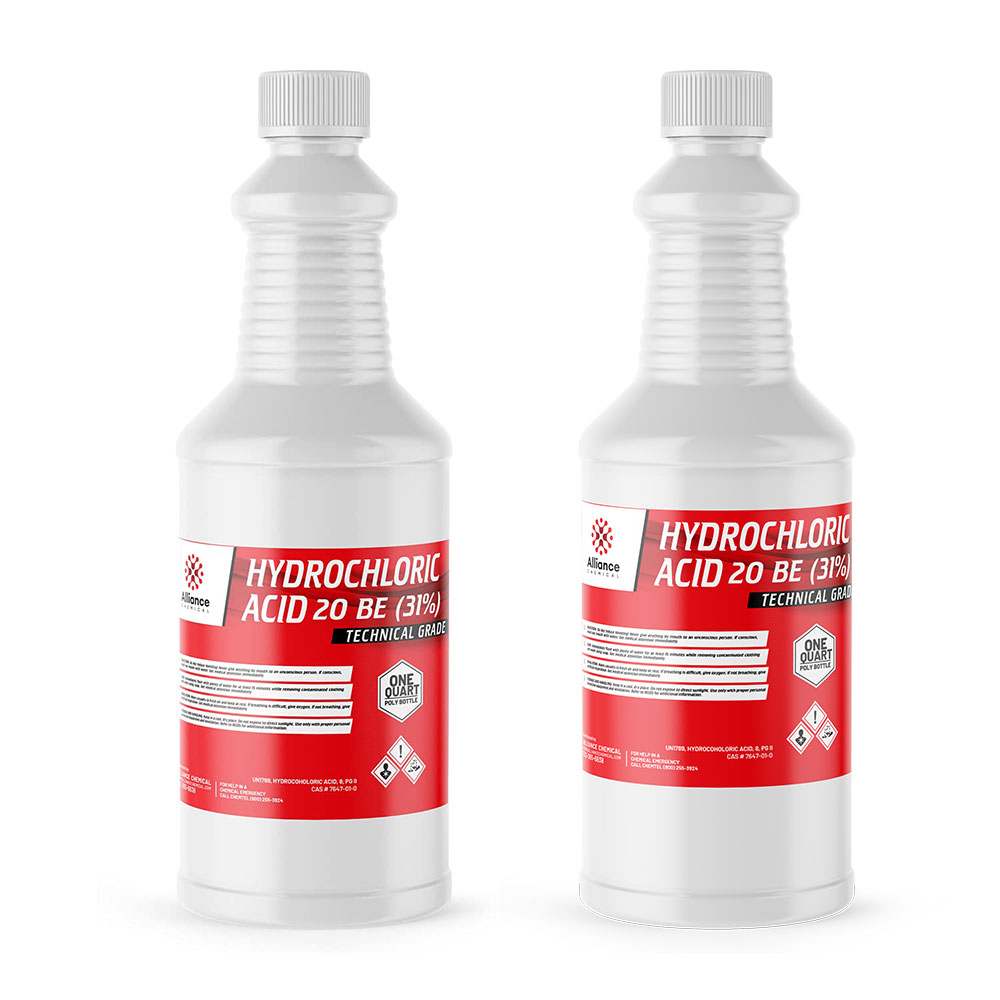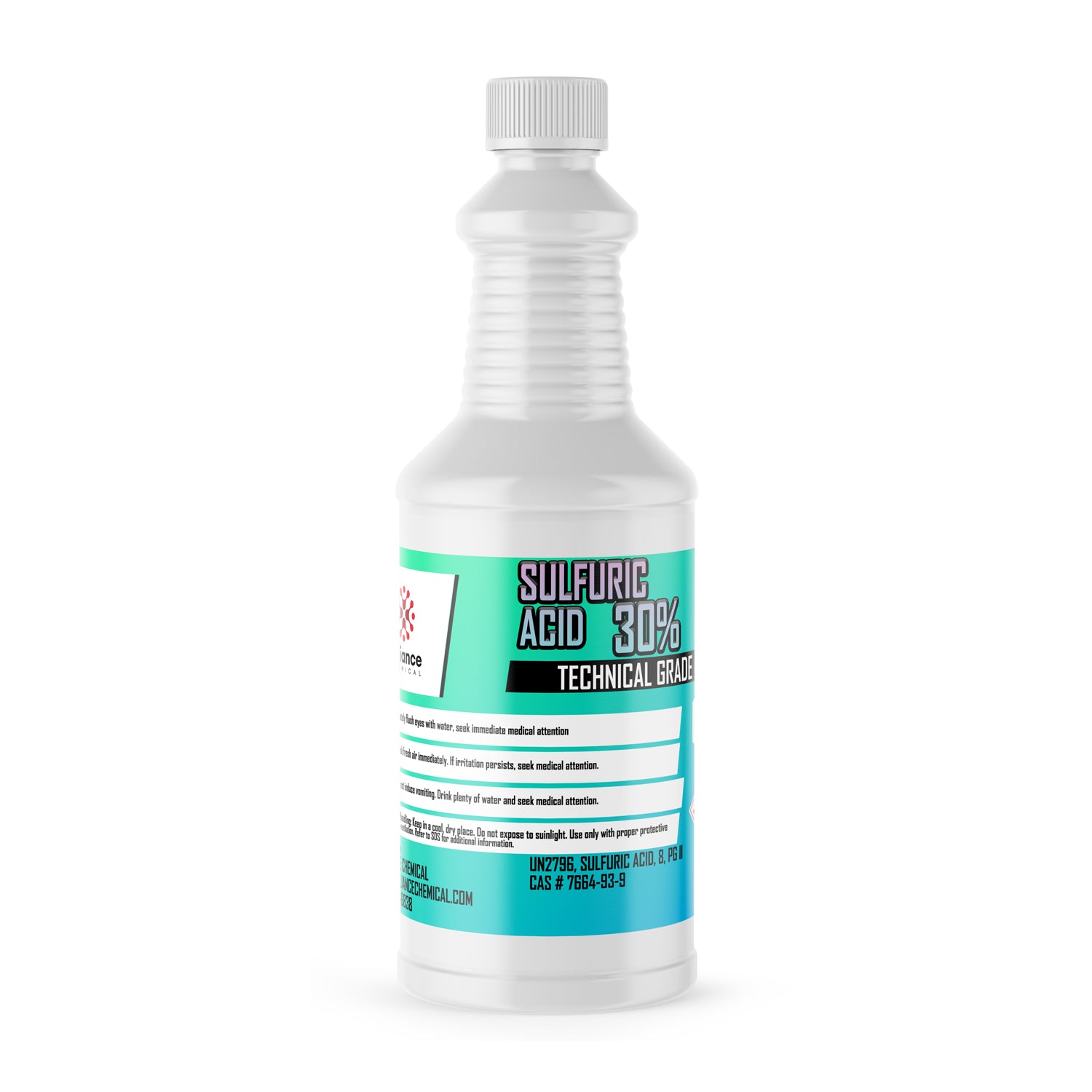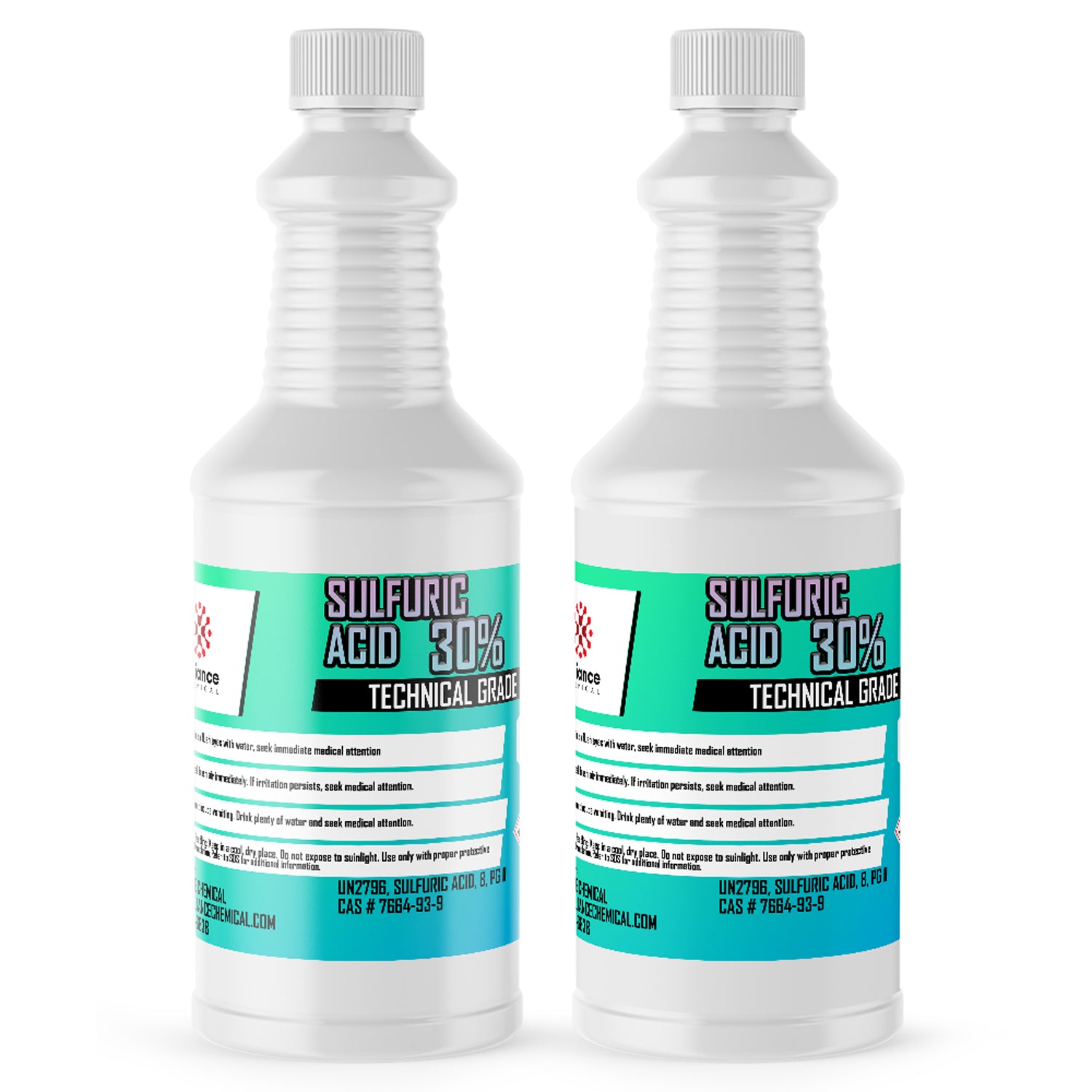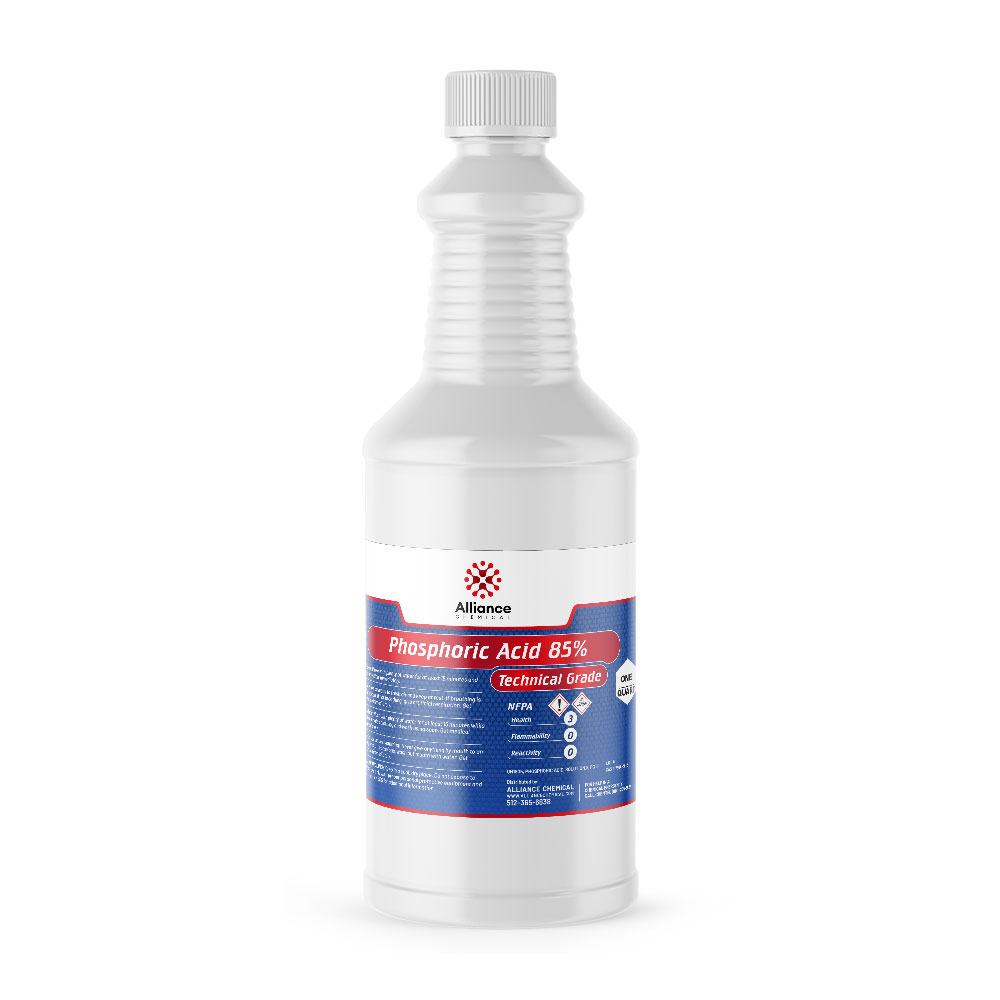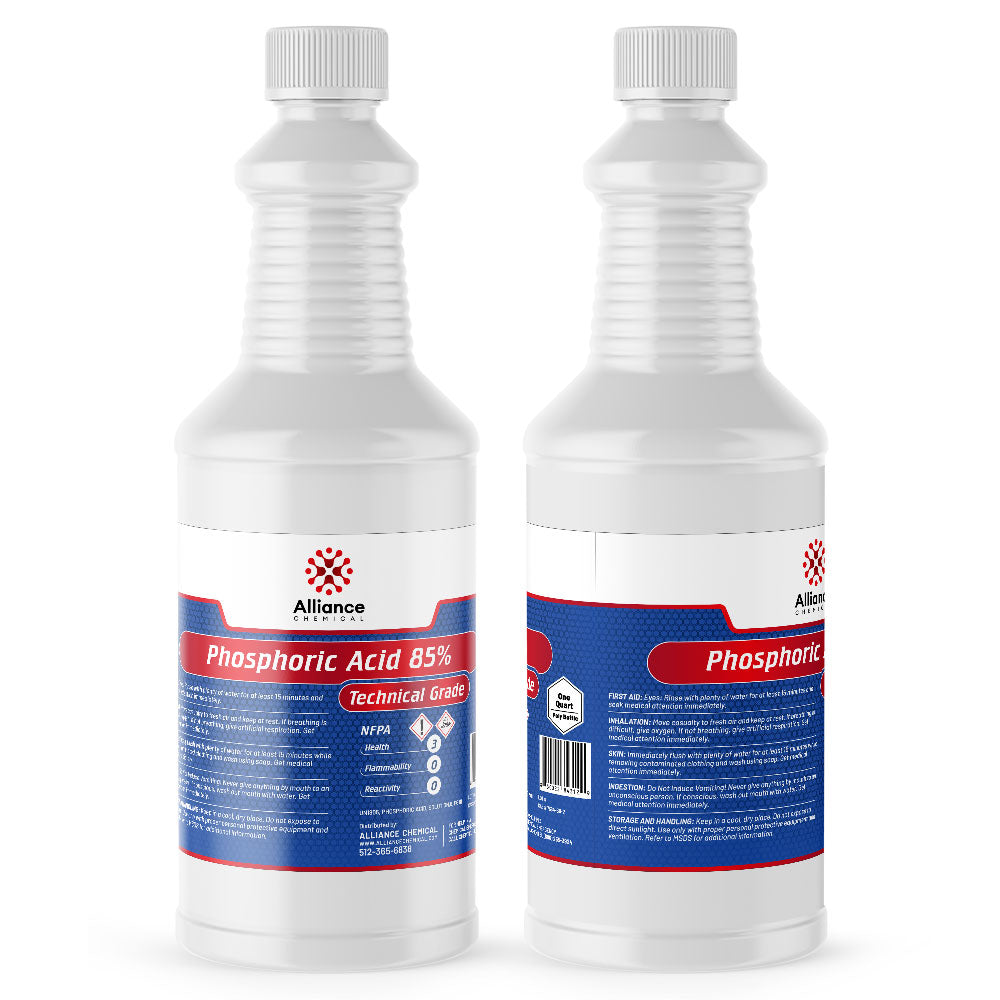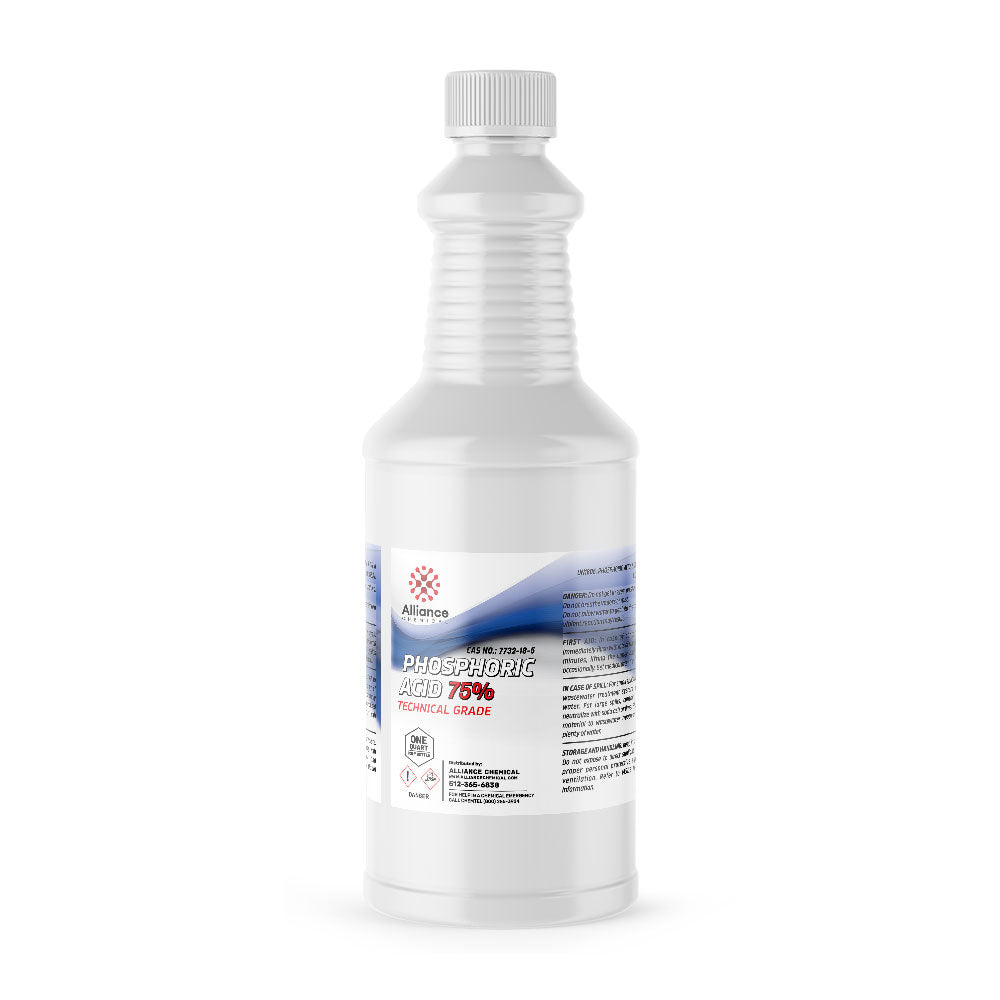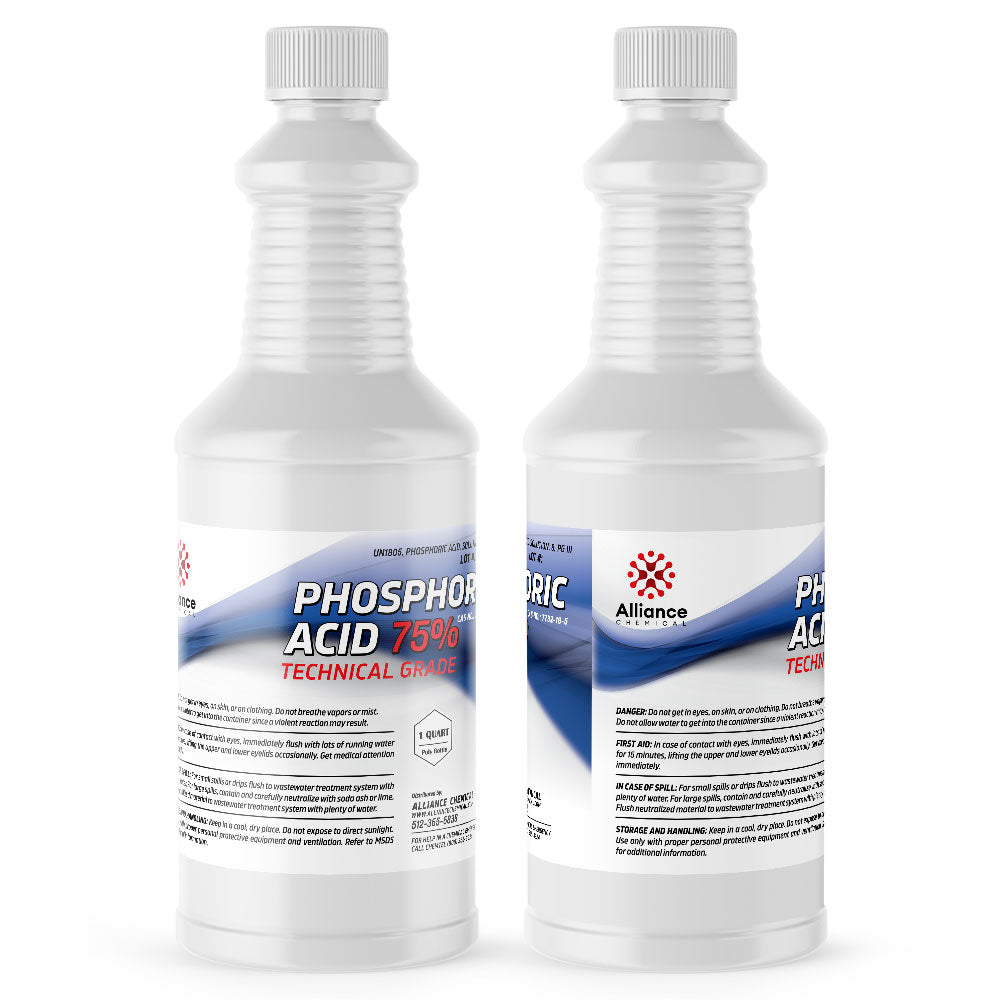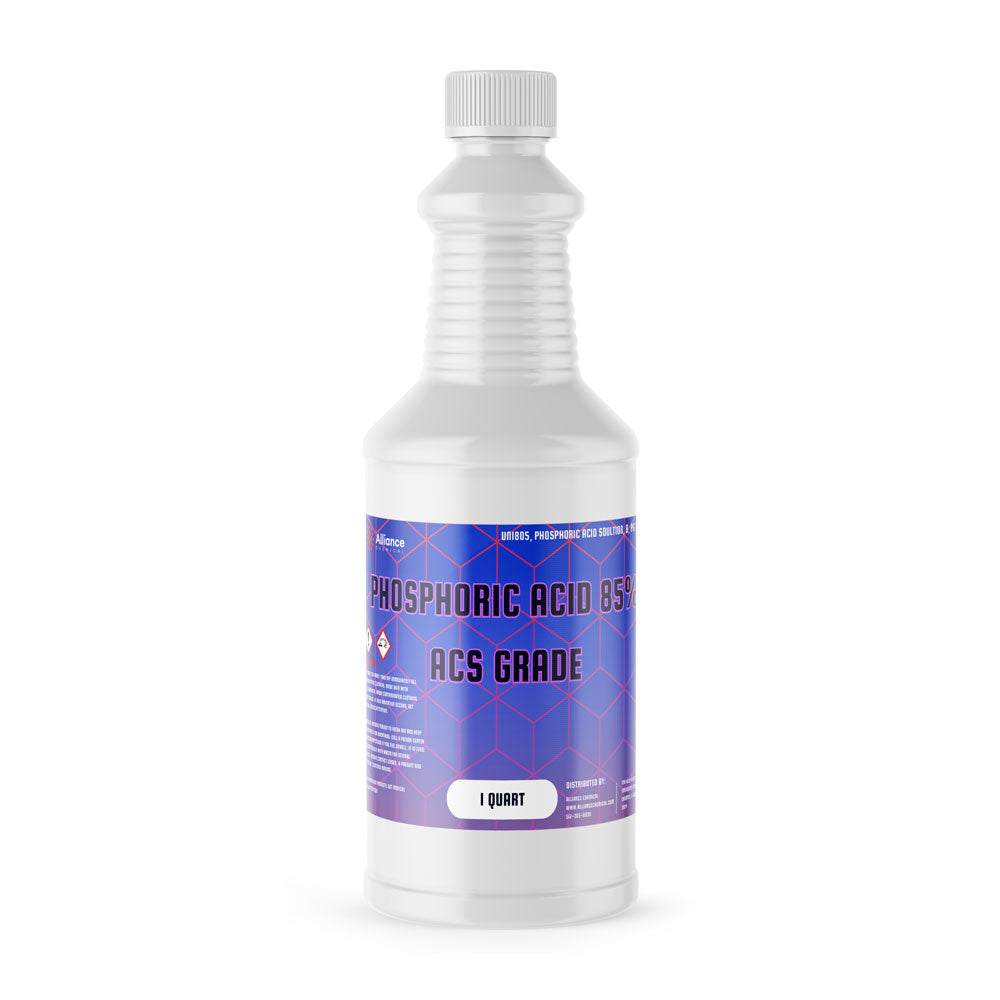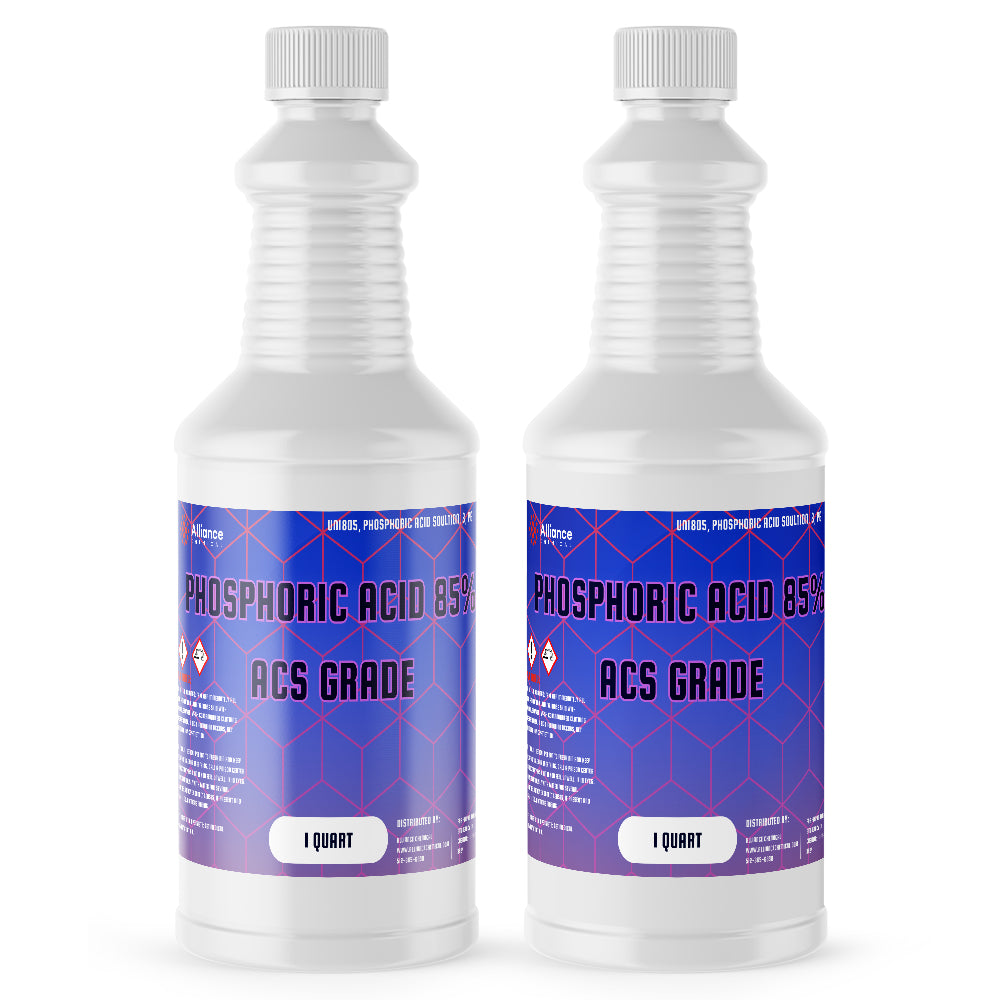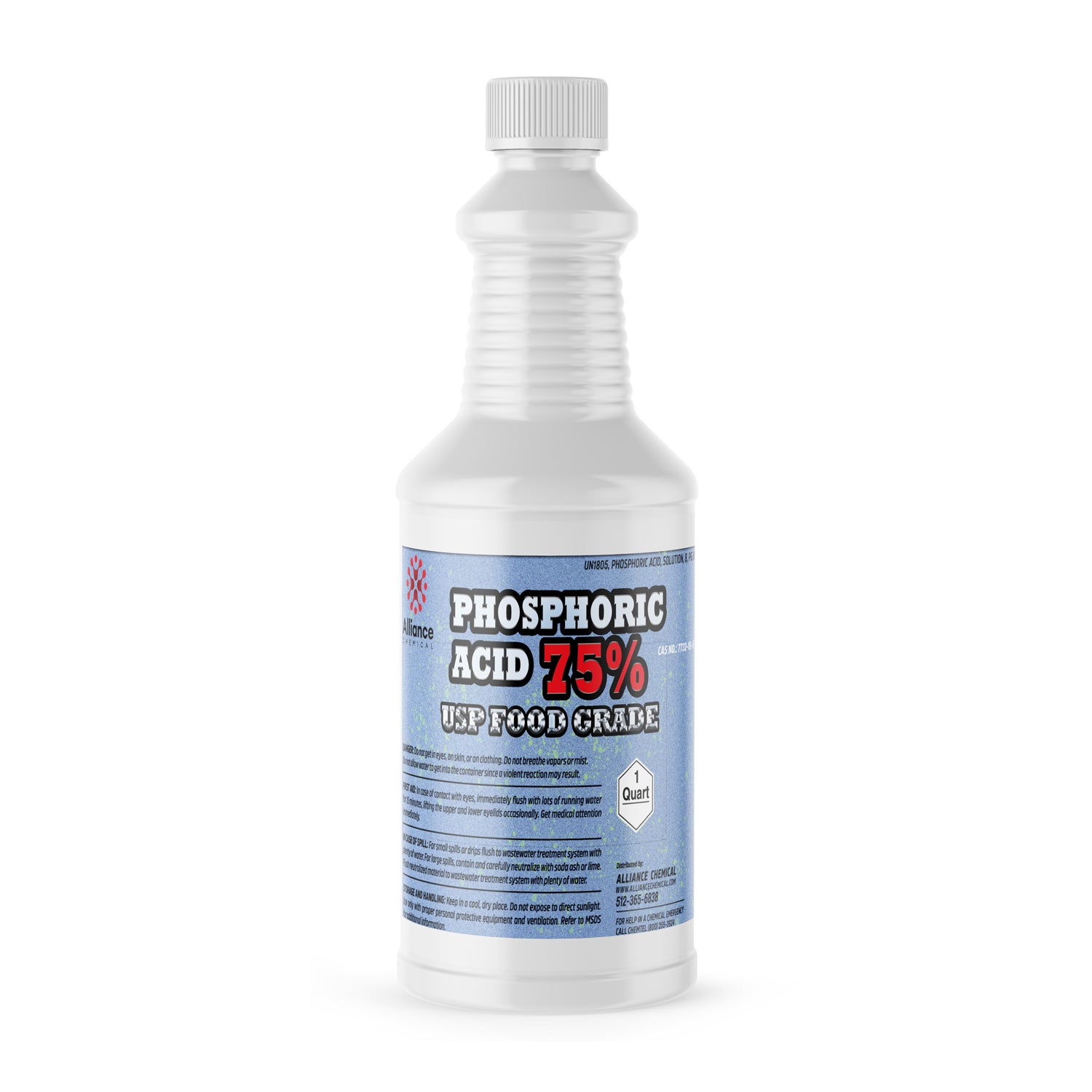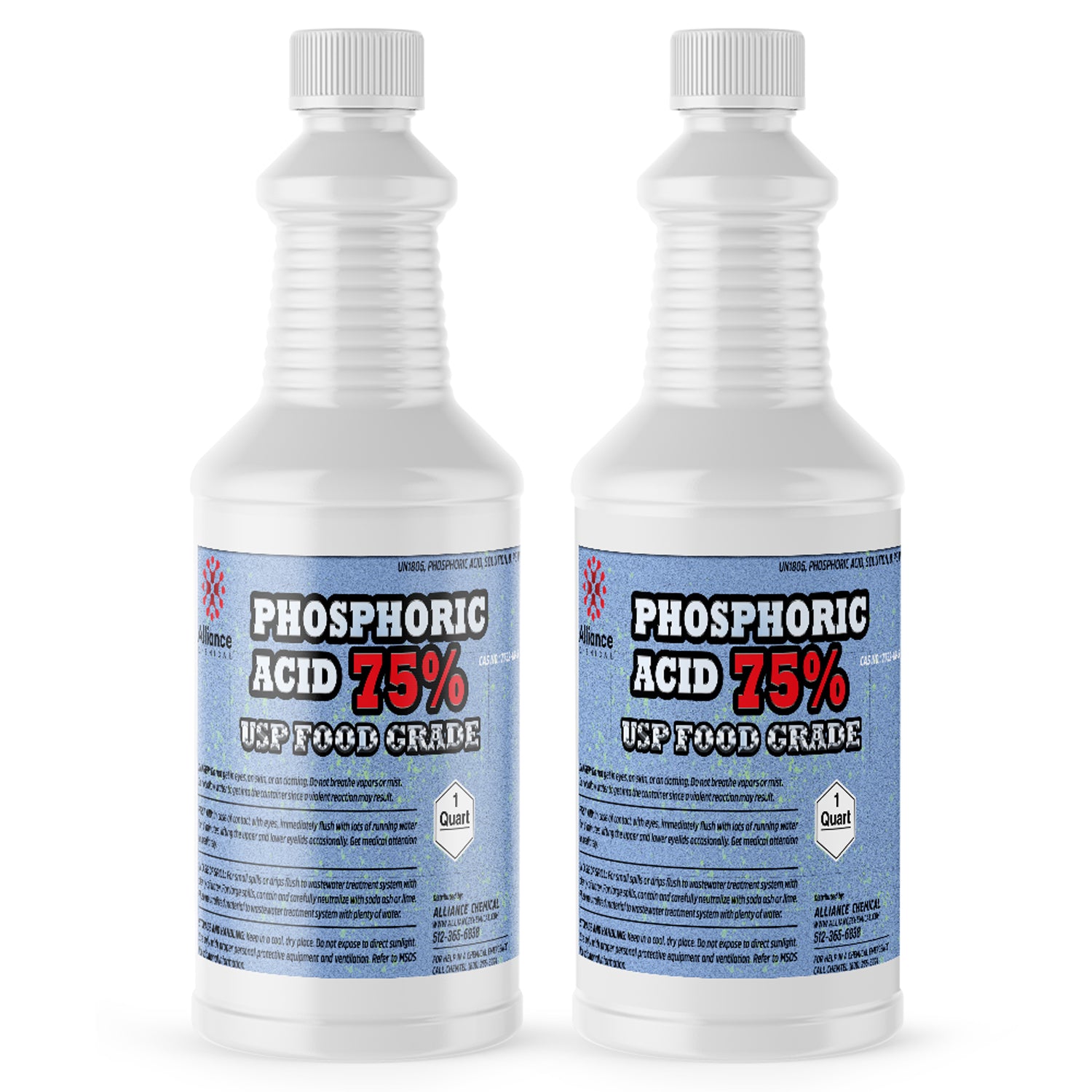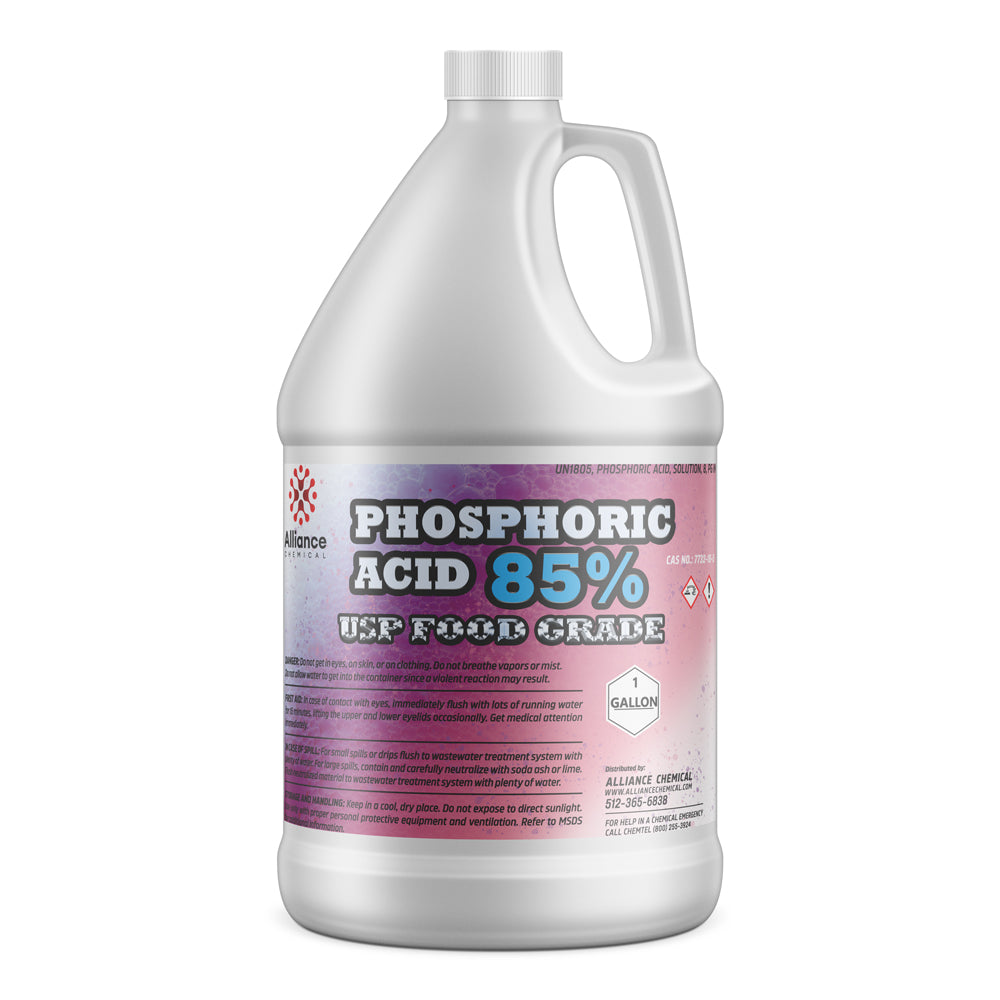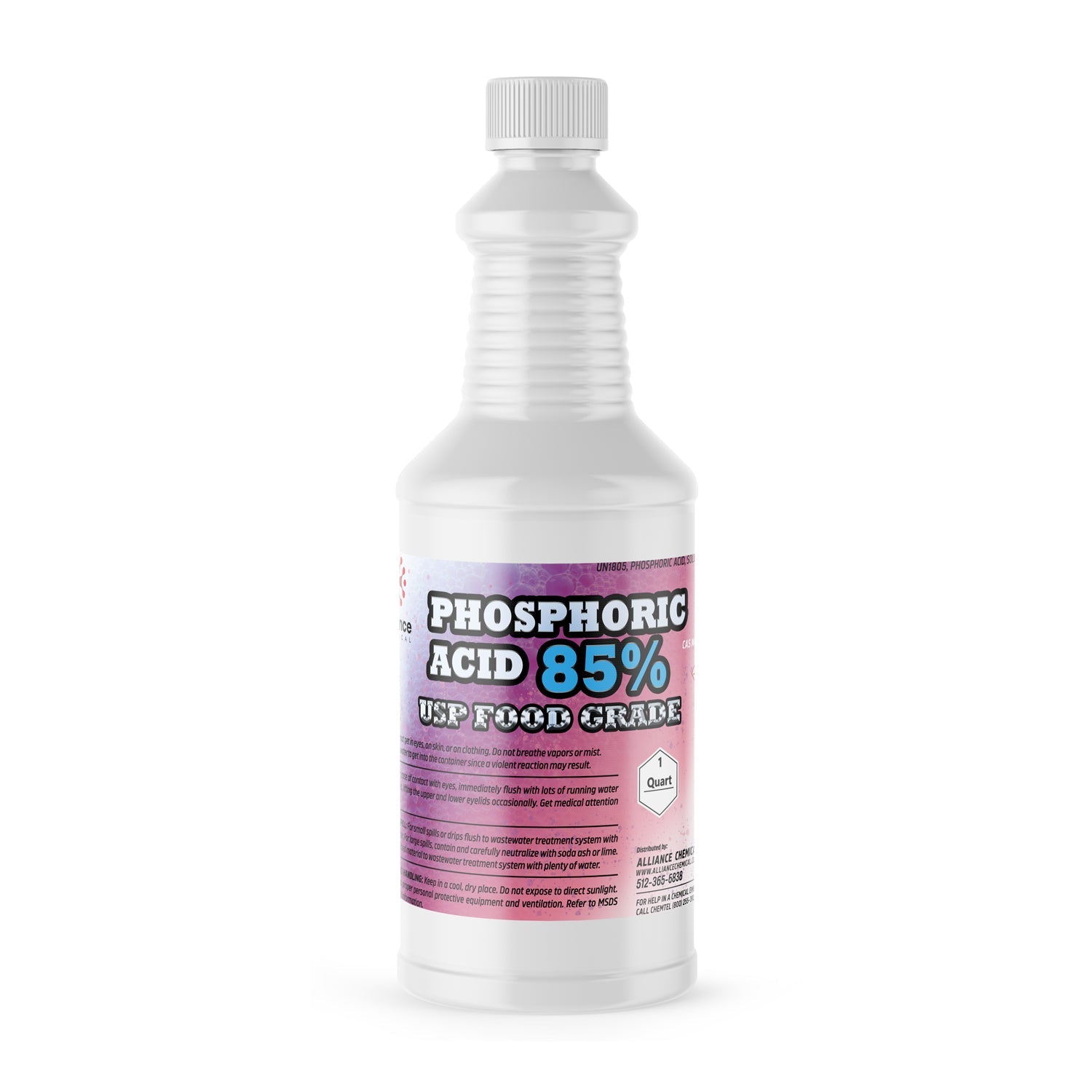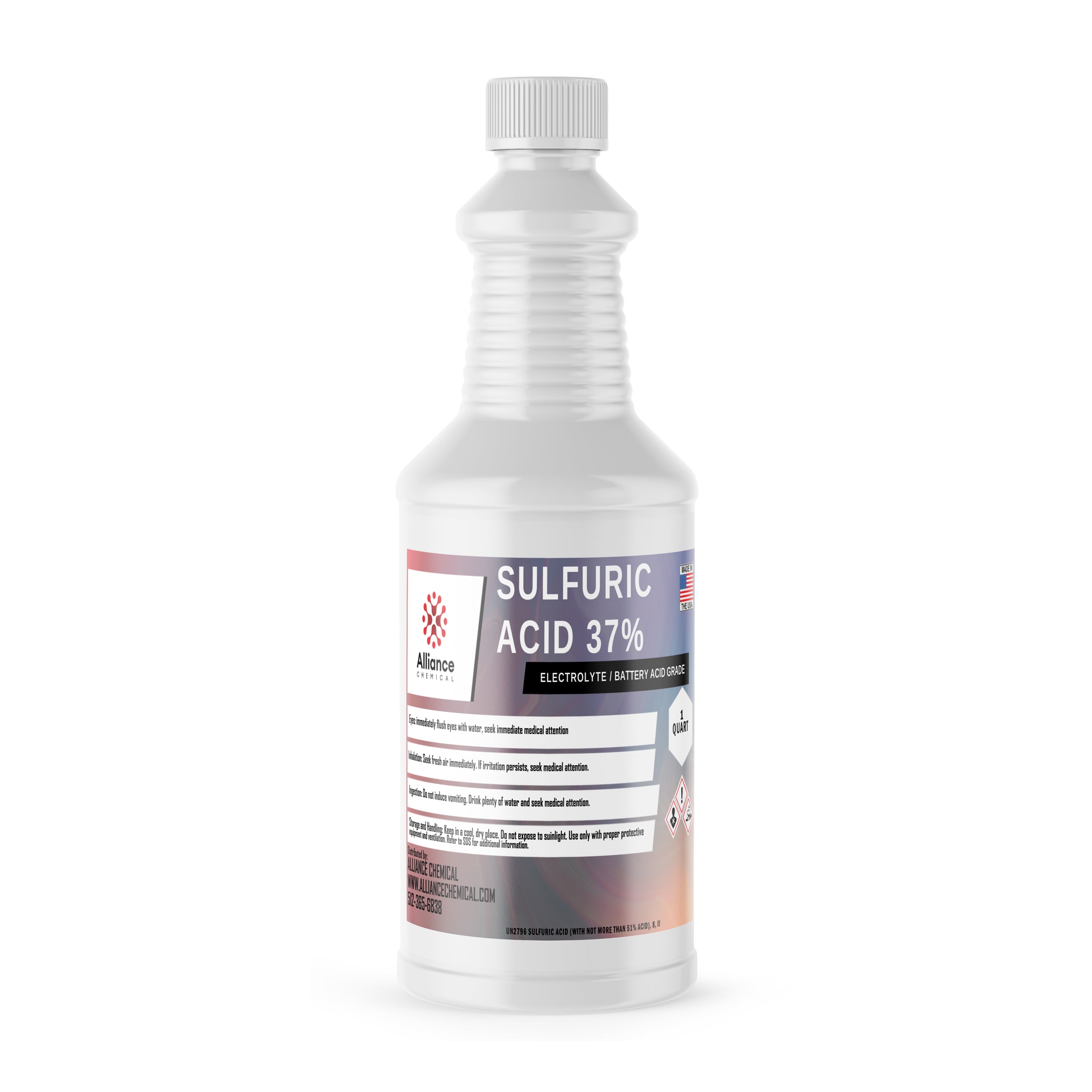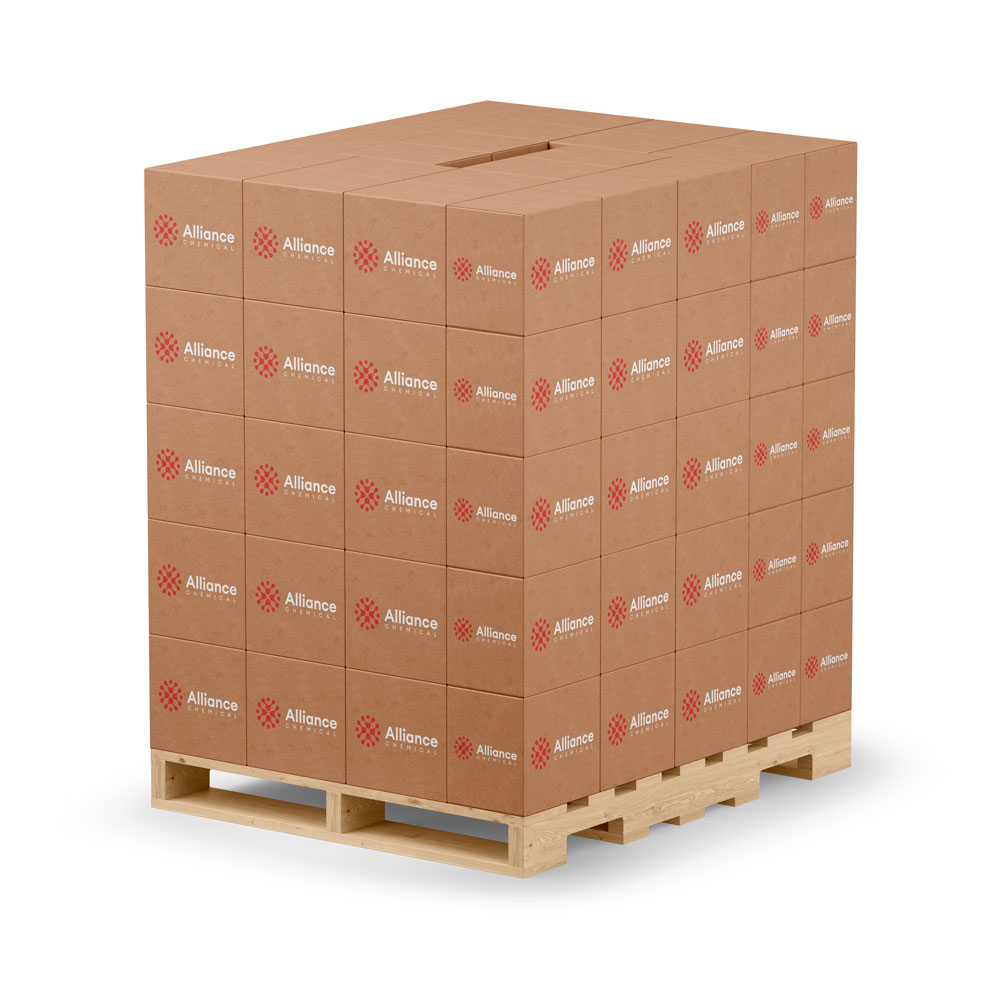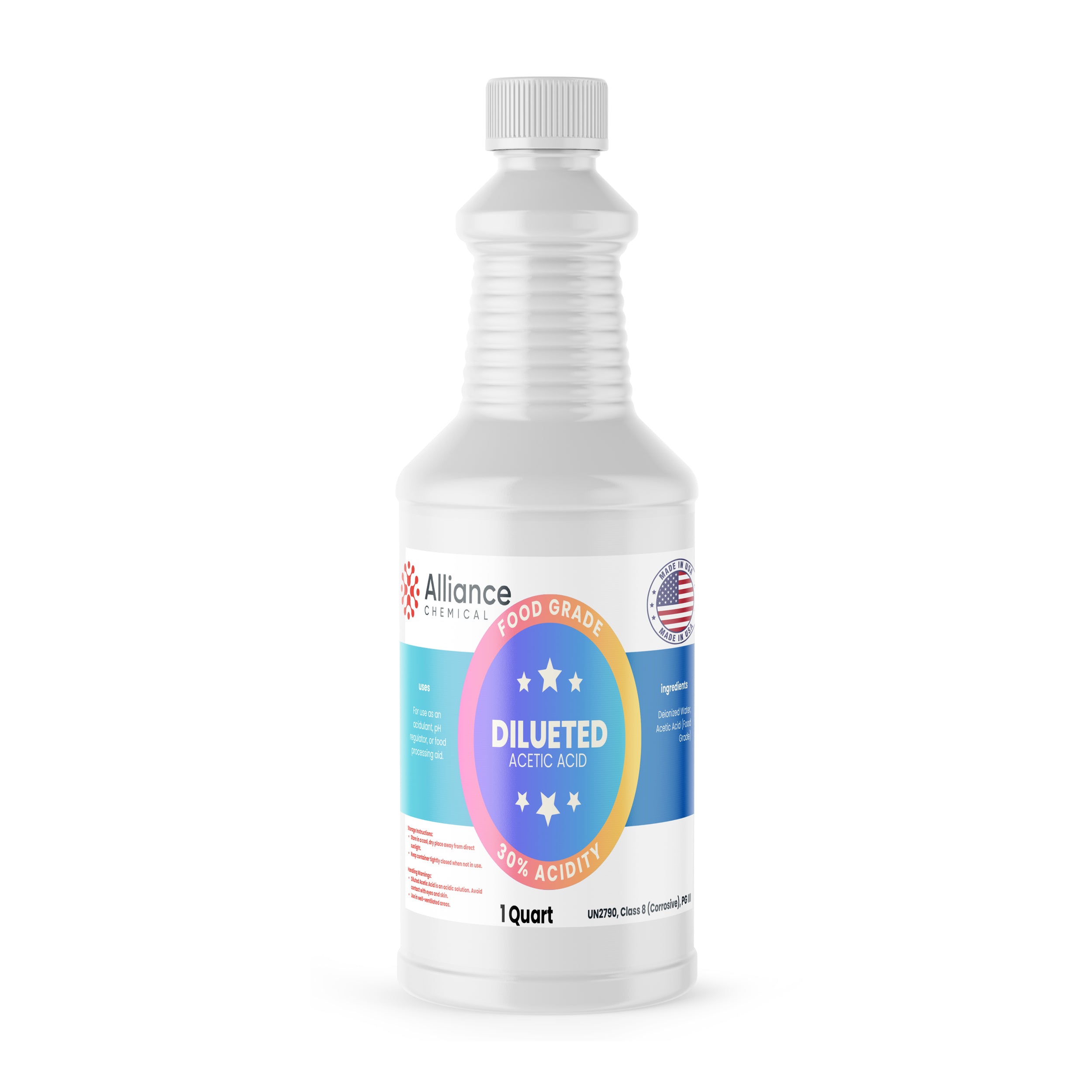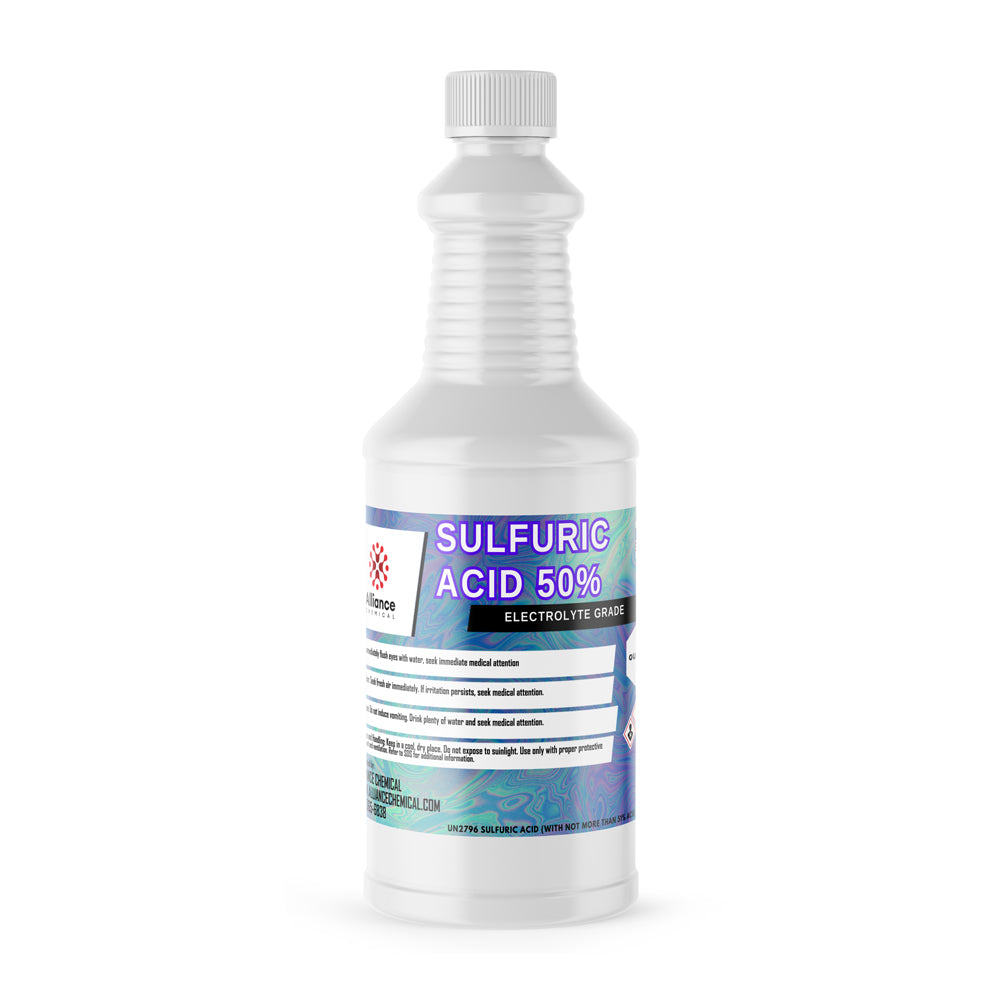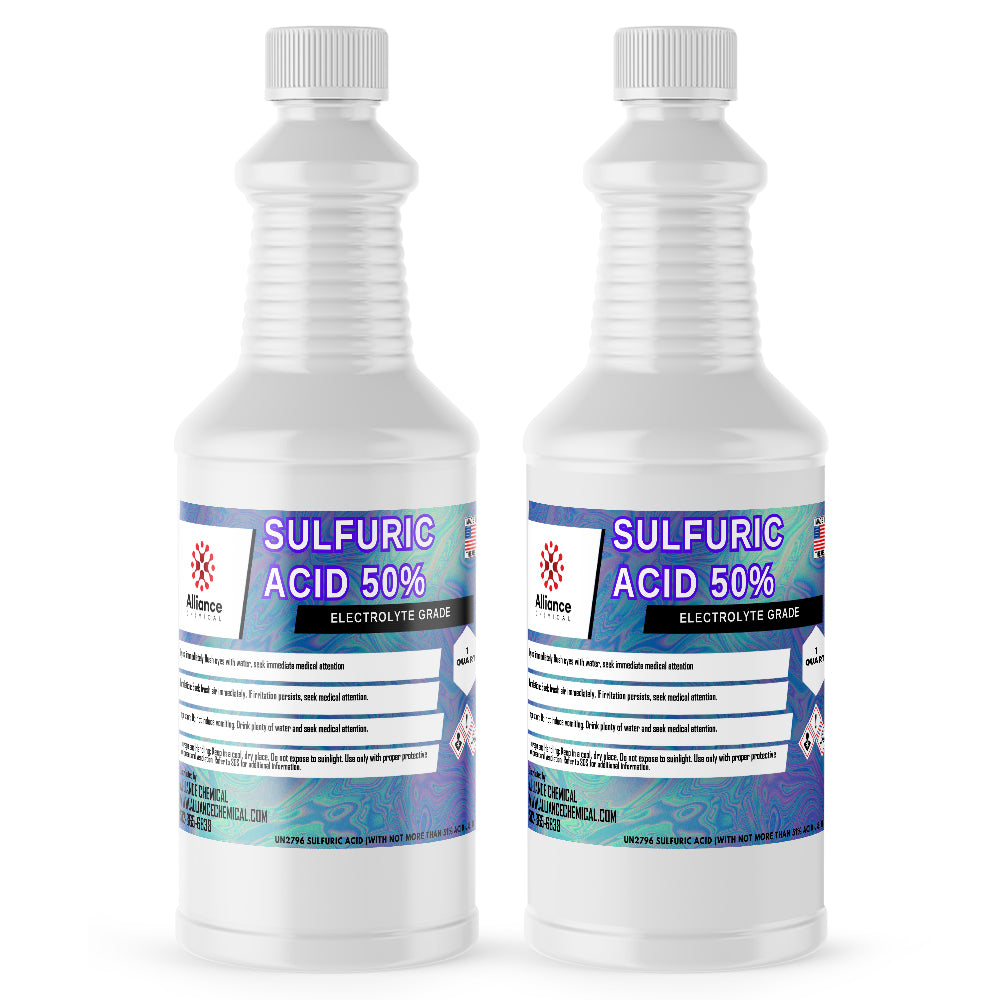Phosphoric Acid 30% - The Ultimate Rust Remover Solution
Category : Acids
$9.57
Unit price
✅ Great Choice! No Hazmat Fees
Quantity
Ask a question
Product Overview
Phosphoric Acid 30% - The Ultimate Rust Remover Solution is a clear, colorless orthophosphoric acid-based liquid formulated at 30% w/w. The product presents with a typical assay of 30% and a narrow specification window of 29–31% by titration with standardized NaOH, ensuring consistent rust-etching performance across batches. With a typical APHA color rating of 8 (max 15), this solution offers low coloration suitable for downstream metal treatment processes. Its density at 25°C is 1.07 g/mL and the specific gravity at 20°C ranges from 1.12 to 1.14 (typical 1.13), enabling accurate formulation in metering systems and compatibility with standard storage and handling equipment. The material is soluble in water, with a viscosity of 1.5 cP at 25°C and a refractive index of 1.335, providing predictable flow and wetting characteristics on rusty metal substrates.
In industrial rust removal and metal pretreatment workflows, the 30% phosphoric acid solution serves as an effective rust and scale remover, forming a protective phosphate layer on steel surfaces that enhances coating adhesion. The product is produced under controlled conditions to maintain low residuals and minimal impurity load, including tight limits on chloride (typical 20 ppm, max 50 ppm), nitrate (typical 5 ppm, max 20 ppm), sulfate (typical 30 ppm, max 100 ppm), and phosphate (typical 60 ppm, max 150 ppm). The low heavy metal content, with iron, copper, manganese, nickel, zinc, chromium, cobalt, and lead all meeting stringent limits, supports compliance with industrial hygiene and environmental standards. This ensures reliable performance in high-throughput manufacturing environments while minimizing the risk of contaminants affecting downstream processes.
Key Properties
- CAS: 7664-38-2
- Appearance: Clear, colorless liquid
- Odor: Odorless
- Chemical Formula: H₃PO₄
- Molecular Weight: 97.99 g/mol
- Boiling Point: 158°C
- Specific Gravity (20°C): 1.12–1.14 (typical 1.13)
- Density (25°C): 1.07 g/mL
- Viscosity (25°C): 1.5 cP
- Refractive Index (20°C): 1.335
- Residue After Ignition: Max 0.01% (typical 0.005%)
- Chloride (Cl⁻) : Max 50 ppm (typical 20 ppm)
- Nitrate (NO₃⁻) : Max 20 ppm (typical 5 ppm)
- Ammonium (NH₄⁺): Max 0 ppm (typical 0 ppm)
- Sulfate (SO₄²⁻): Max 100 ppm (typical 30 ppm)
- Phosphate (PO₄³⁻): Max 150 ppm (typical 60 ppm)
- Arsenic (As): Max 0.01 ppm (typical 0.002 ppm)
- Heavy Metals (as Pb): Max 0.5 ppm (typical 0.1 ppm)
- Iron (Fe): Max 1 ppm (typical 0.2 ppm)
- Copper (Cu): Max 0.5 ppm (typical 0.1 ppm)
- Manganese (Mn): Max 0.5 ppm (typical 0.1 ppm)
- Nickel (Ni): Max 0.5 ppm (typical 0.1 ppm)
- Lead (Pb): Max 0.5 ppm (typical 0.1 ppm)
- Zinc (Zn): Max 1 ppm (typical 0.2 ppm)
- Aluminum (Al): Max 5 ppm (typical 1 ppm)
- Chromium (Cr): Max 0.5 ppm (typical 0.1 ppm)
- Cobalt (Co): Max 0.2 ppm (typical 0.05 ppm)
- Calcium (Ca): Max 100 ppm (typical 40 ppm)
- Magnesium (Mg): Max 100 ppm (typical 40 ppm)
- Potassium (K): Max 50 ppm (typical 20 ppm)
- Sodium (Na): Max 50 ppm (typical 20 ppm)
- Acidity (Meq): Max 22 (typical 10 meq)
- Water Content: Max 0% (Karl Fischer method)
- Substances Reducing Permanganate: Passes test
Common Applications
- Rust Removal: Application Category: Metal Treatment — Used to effectively remove rust and corrosion from metal surfaces prior to painting or coating, providing a clean substrate and promoting adhesion. Technical parameters support controlled etching with minimal substrate attack when used per process guidelines.
- pH Adjustment: Application Category: Water Treatment — Utilized for adjusting pH levels in various water treatment processes, enabling stabilization of downstream chemistry and control of corrosion/scale formation.
- Food Processing: Application Category: Food Industry — Serves as an acidulant in food processing applications, contributing to flavor enhancement and preservation when used within regulatory limits and with validated cleaning and sanitation procedures.
- Fertilizer Production: Application Category: Agriculture — Acts as a key ingredient in the production of phosphate fertilizers, supporting phosphate availability for crop nutrition and subsequent soil chemistry management.
- Cleaning Agent: Application Category: Industrial Cleaning — Employed in cleaning formulations for its ability to dissolve mineral deposits and prepare metal surfaces for subsequent coatings or treatments.
Safety Precautions
Handling and storage should follow established chemical hygiene practices. Store in a cool, dry place away from incompatible materials, using containers made of HDPE or glass to minimize reactive interactions. Ensure proper ventilation to control vapor accumulation and wear appropriate PPE, including chemical-resistant gloves, splash goggles, and a lab coat or chemical-resistant clothing during handling. Maintain separation from oxidizers and strong bases to prevent exothermic reactions and material degradation.
Emergency and exposure considerations: This product is classified as dangerous (DANGER) with skin corrosion/eye damage and metal corrosion hazards. In the event of contact with skin or eyes, rinse thoroughly with water for several minutes and seek medical attention if irritation persists. If inhaled, move to fresh air and seek medical evaluation if symptoms occur. Ingestion requires immediate medical attention; do not induce vomiting. Transported as UN 1805, Phosphoric acid solution, Class 8, PG II. Follow local regulations and the Safety Data Sheet (SDS) guidance for spill response, first aid, and exposure monitoring.
Benefits
✔ High-purity, controlled phosphoric acid grade – Consistent 30% formulation with tight assay and impurity controls for reliable rust removal and metal pretreatment.
✔ Low heavy metal content – Compliant with stringent regulatory limits (Fe, Cu, Zn, Cr, Pb, Ni, Mn, Co) to reduce downstream contamination risks.
| Property | Value |
|---|---|
| Molecular Weight | 98 g/mol |
| Formula | H3PO4 |
| Assay | 30% |
| Grade | Technical |
| Flash Point | 200 |
| Form | Liquid |
| Solubility | High water solubility, miscible with polar organic solvents, complete dissolution |
| Appearance | Clear colorless liquid, slightly viscous fluid |
| Melting Point | 42 °C |
| Boiling Point | 158 °C |
| Specific Gravity | 1.18 |
| Industry | Industrial, Environmental, Research |
Compare Products
| Price |
|---|
| SKU |
| Rating |
| Discount |
| Vendor |
| Tags |
| Weight |
| Stock |
| Short Description |

